HITCHHIKING IN ARGENTINA
From Tierra del Fuego to Buenos Aires
I’m not used to backpacking. Usually I have a bike, a kayak or a car with me. This time I’m alone, dependent. But I’ve got time on my hands and I haven’t planned a thing. All the conditions are right for me to try hitchhiking. From Ushuaïa, at the tip of the South American continent, I set off up Argentina to its capital. At the whim of the drivers, along the “Ruta 3”, along the Atlantic Ocean.
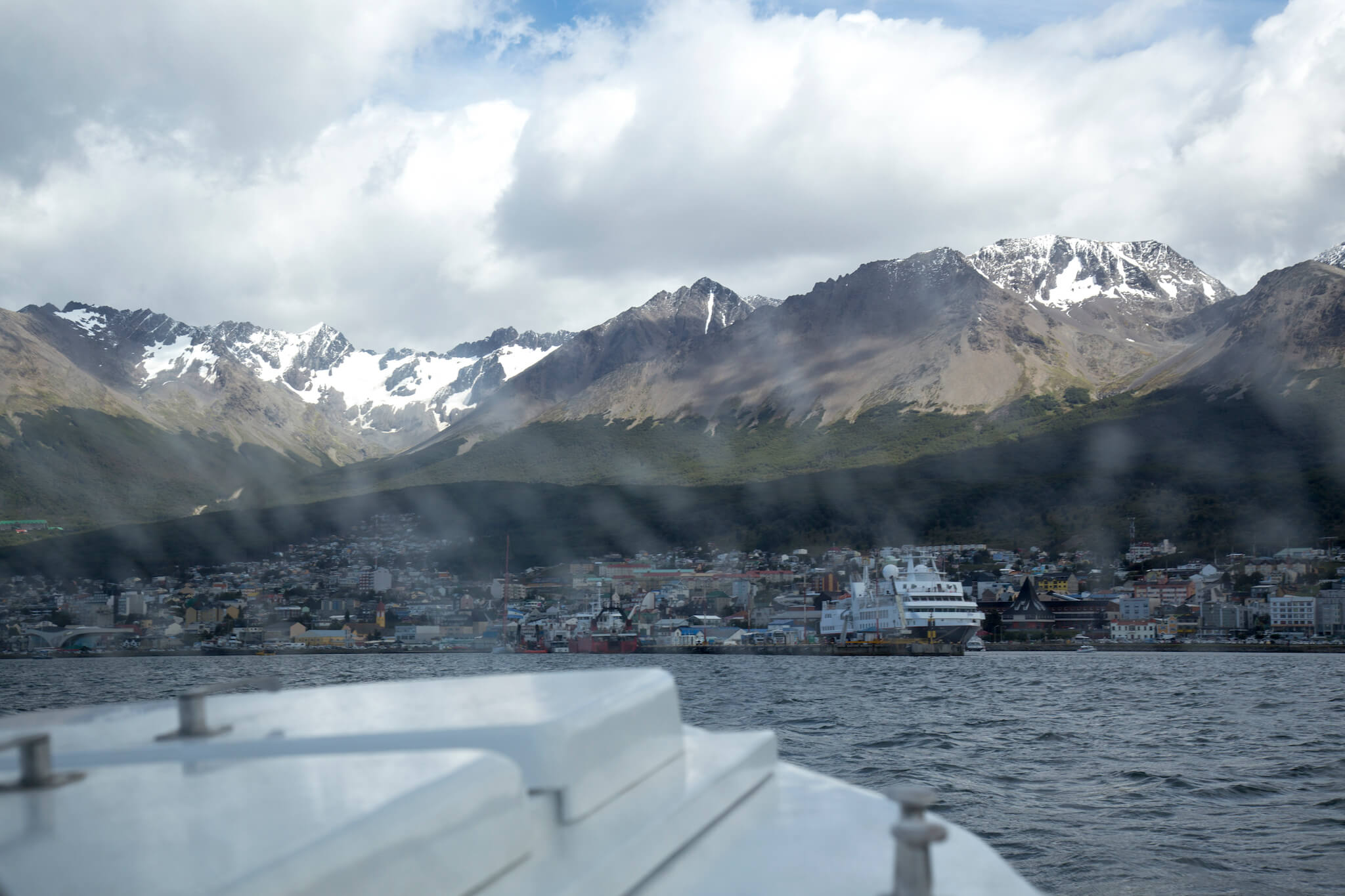
I’m about to disembark in Ushuaïa from the Chilean town of Puerto Williams, where I spent a week (see “Patagonia” adventure). The crossing of the Beagle Channel is done on a small boat. I’ve dreamed of Ushuaïa for a long time, but I never imagined I’d arrive in this mythical city via its southern front. Ushuaïa, the end of the world, the city at the end of the Panamericana…

With its mountains plunging into the sea, this is truly the end, or beginning, of the Andes.
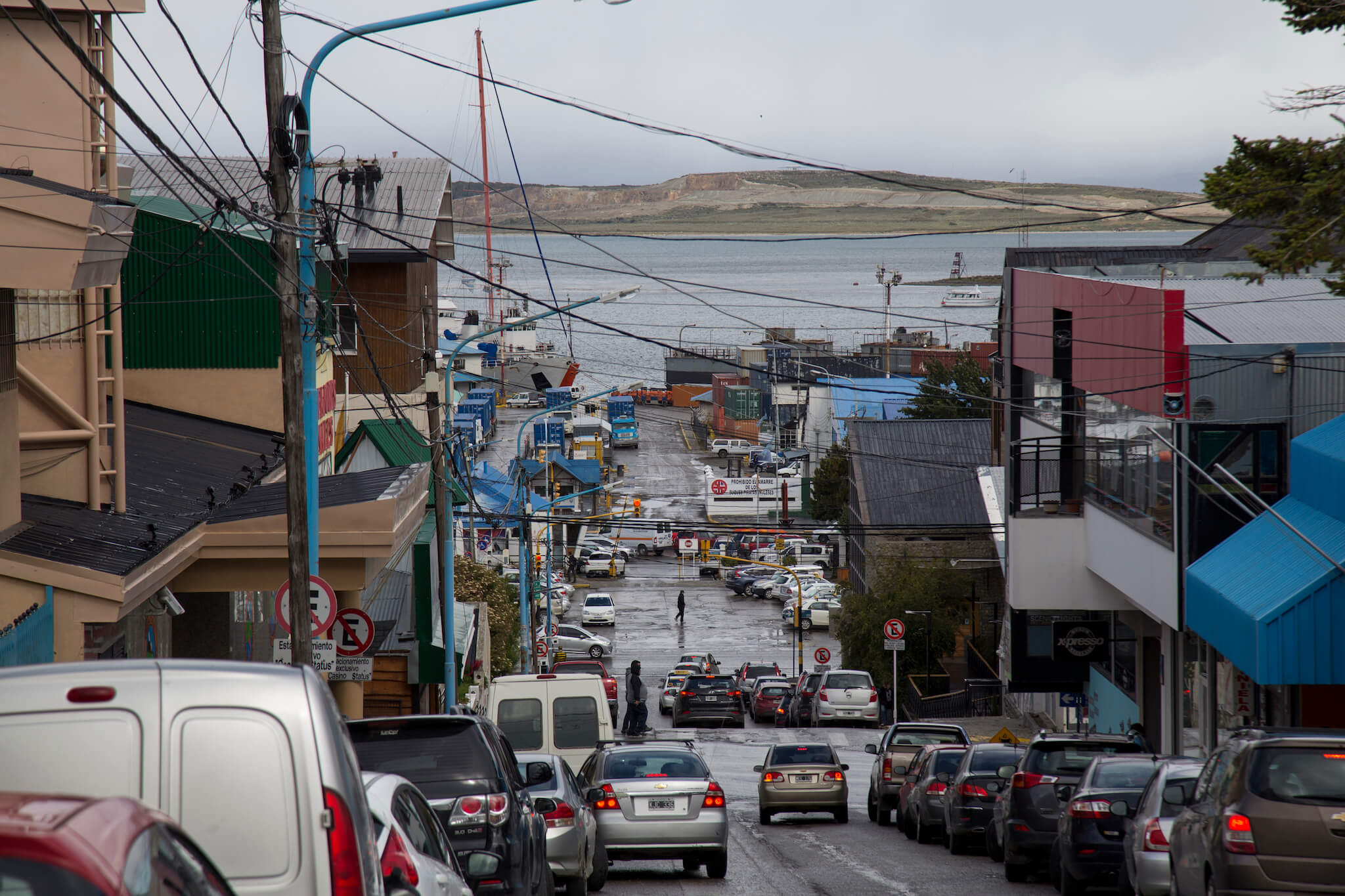
Very touristy at this time of year, I’m disappointed by this town, which ultimately holds little interest. Hordes of tourists flock here to take a photo in front of the mythical “El Fin del Mundo” sign, and the town revolves around the tourist industry. All the more so as Ushuaïa is an important gateway to Antarctica, which can be reached by sailboat or cruise ship.
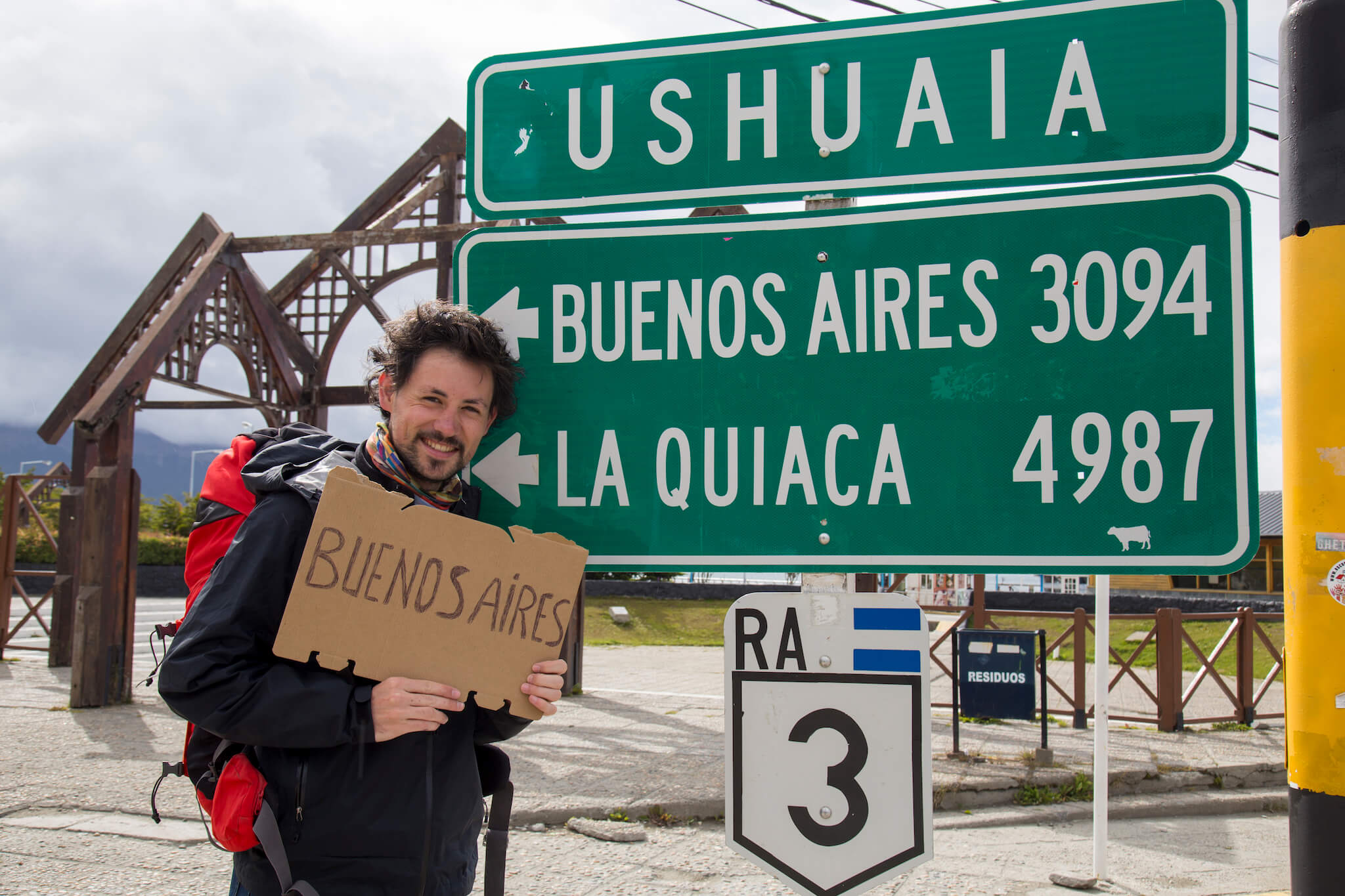
It’s 4,987 kilometers from Ushuaïa to La Quiaca, a town in the very north of the country on the Bolivian border. For my part, I have “only” a little over 3,000 kilometers to cover to reach the Argentine capital from Tierra del Fuego.
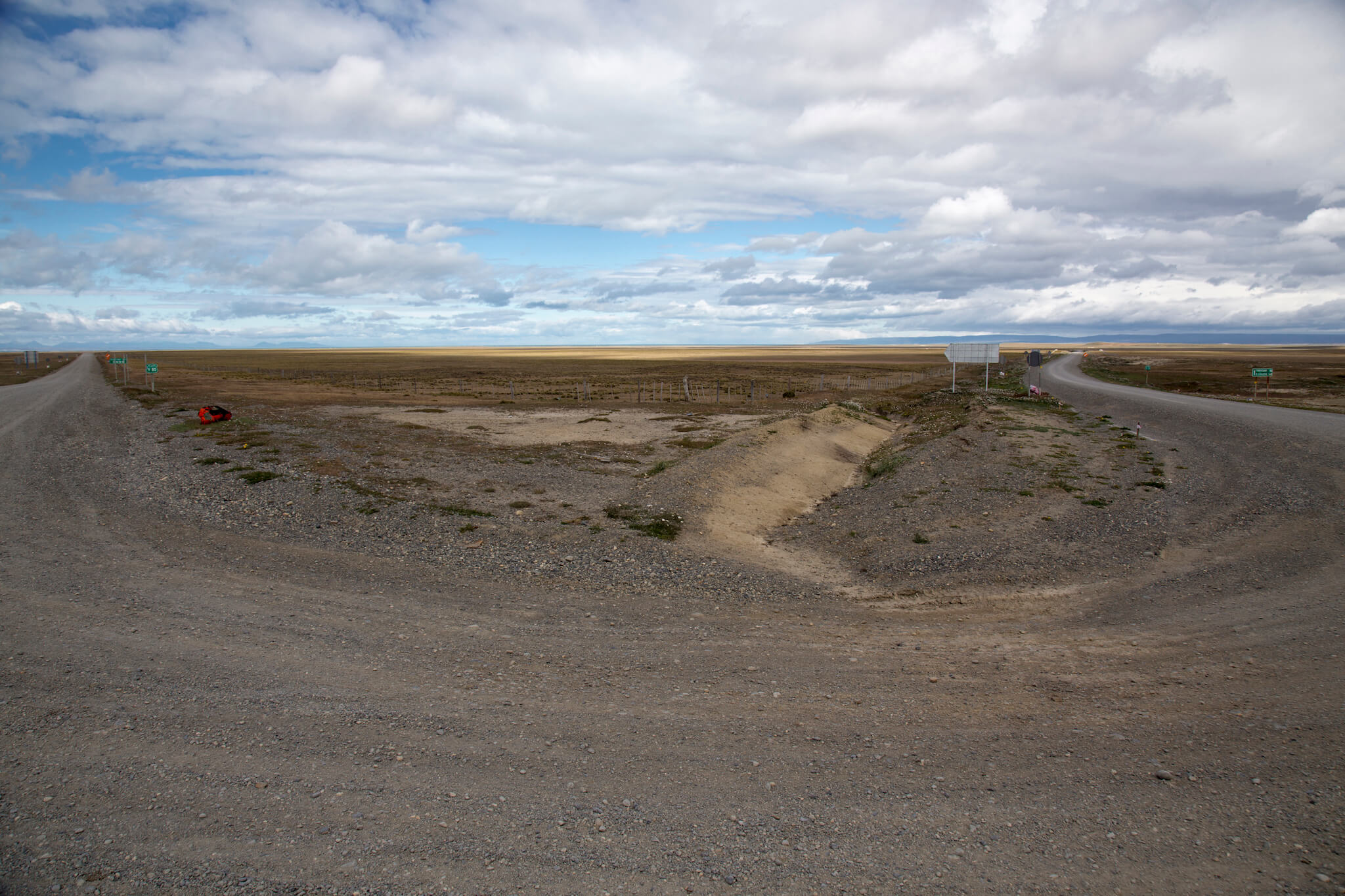
At the roadside, you have to be patient. The area is deserted, and this will be my longest wait (2h30).
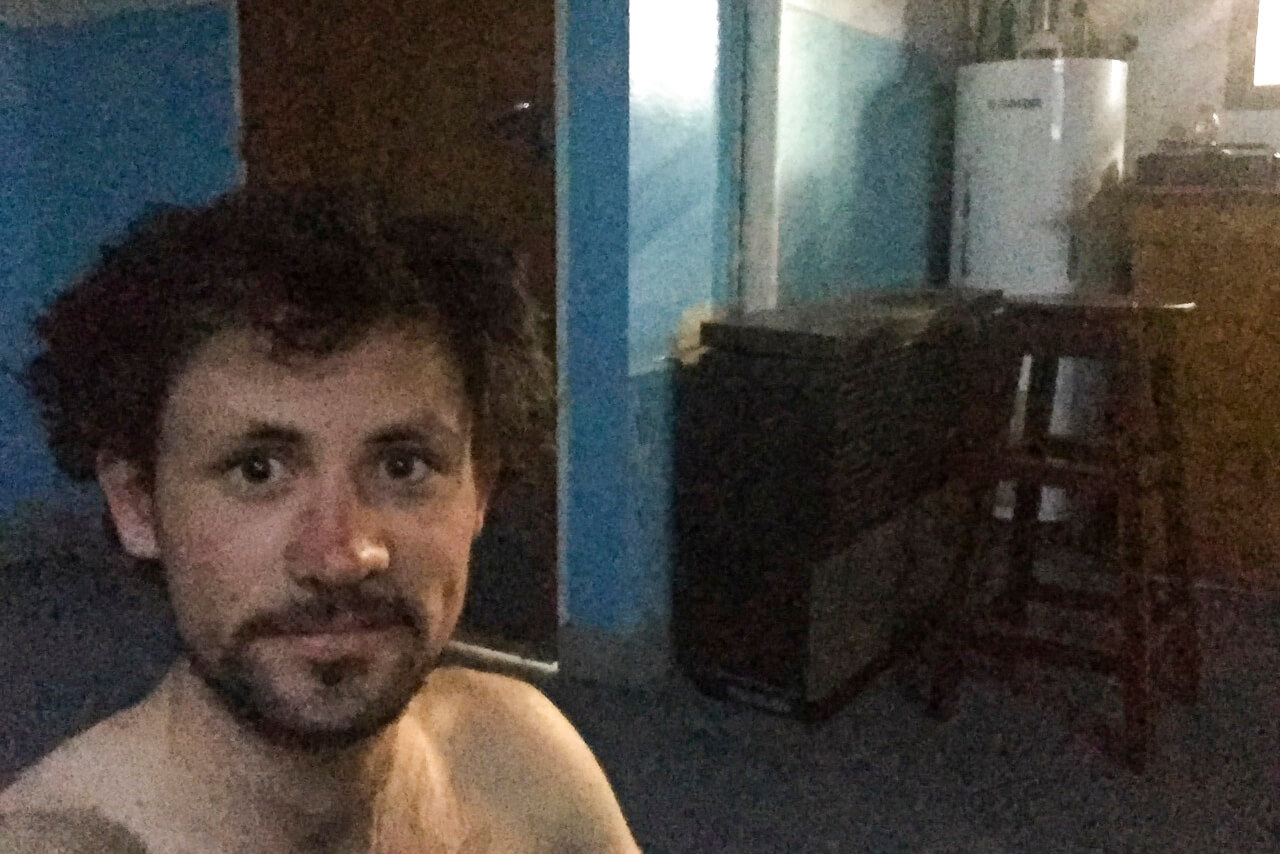
At the San Sebastian border crossing, I take refuge in a small room between Argentina and Chile. Admittedly, it’s very noisy with the constant passage of trucks, but it’s warm. I’m sheltered from the wind, and there’s water and electricity.
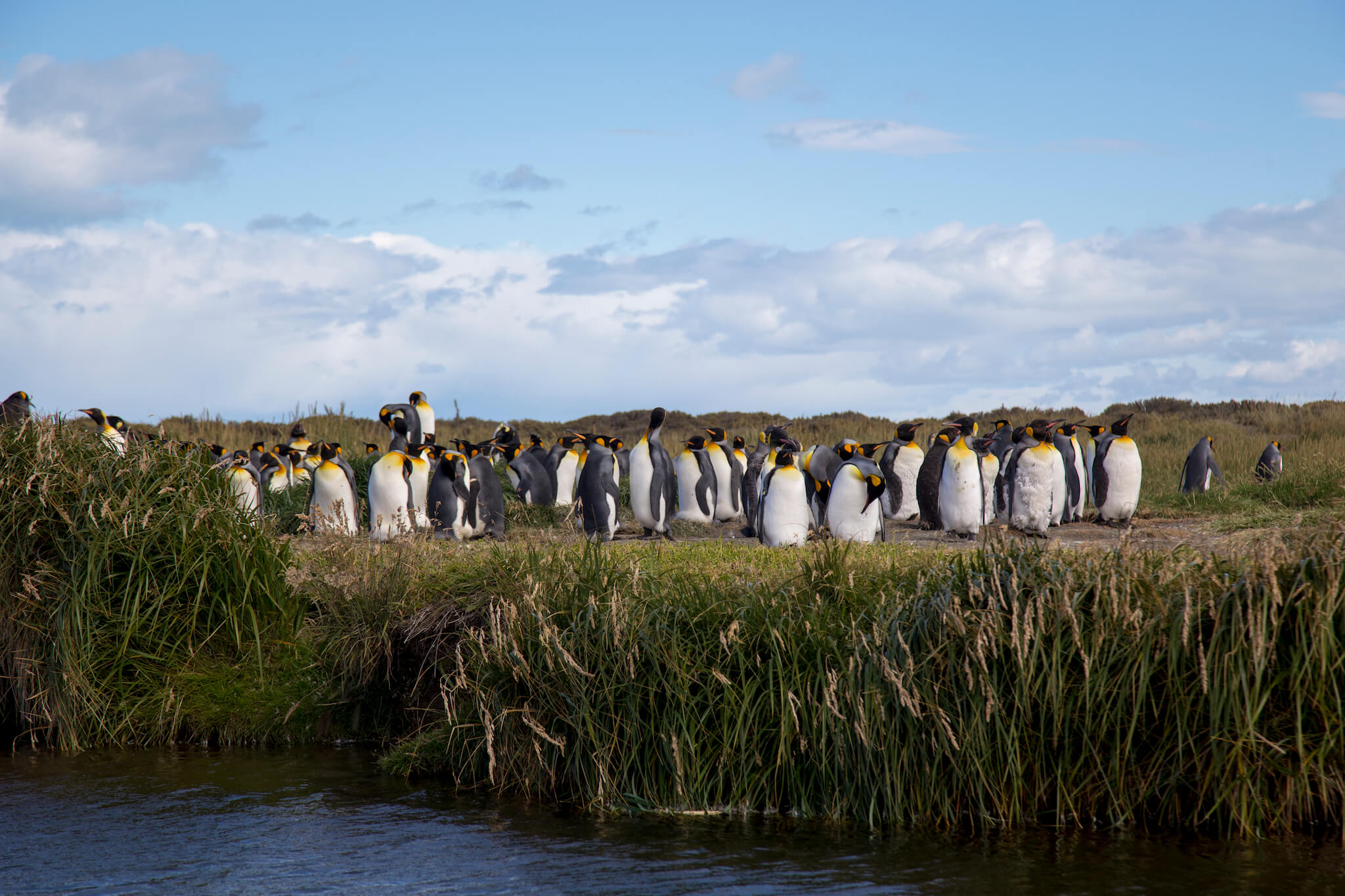
Near Porvenir in Chile, I’m fulfilling an old dream. To see king penguins! The king penguin is the second largest penguin species after the emperor penguin. Adults measure around 90 cm and usually weigh between 12 and 14 kg. They moult periodically to keep their plumage watertight (as shown here on the right). Moulting takes place before the mating season, enabling penguins to don attractive plumage for courtship.
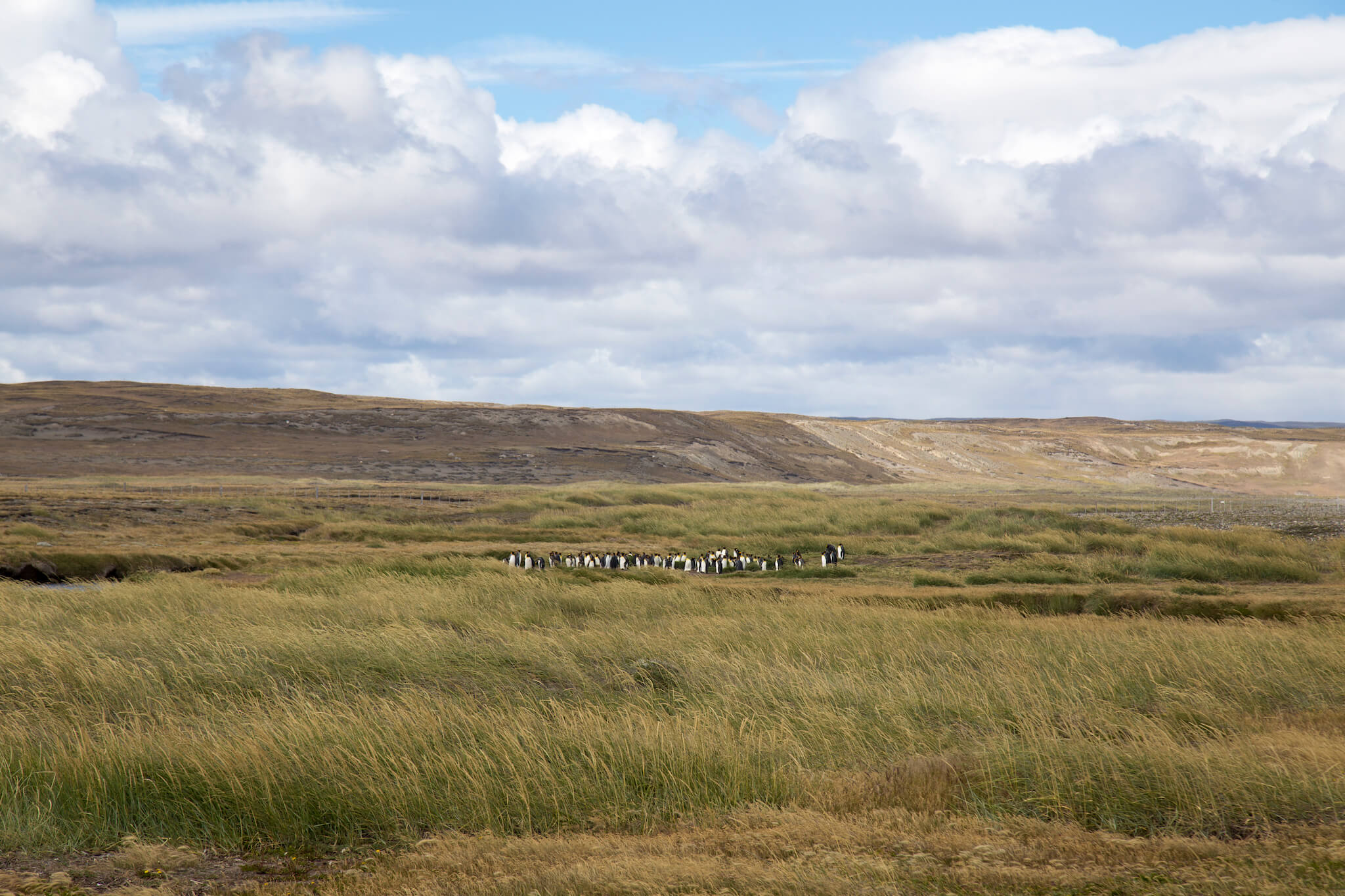
King penguins gather in colonies. They can be found along the coasts of sub-Antarctic islands and archipelagos such as the Kerguelen and Crozet Islands. They can also be seen in the Falkland Islands, South Georgia (Antarctica), New Zealand and Chile.
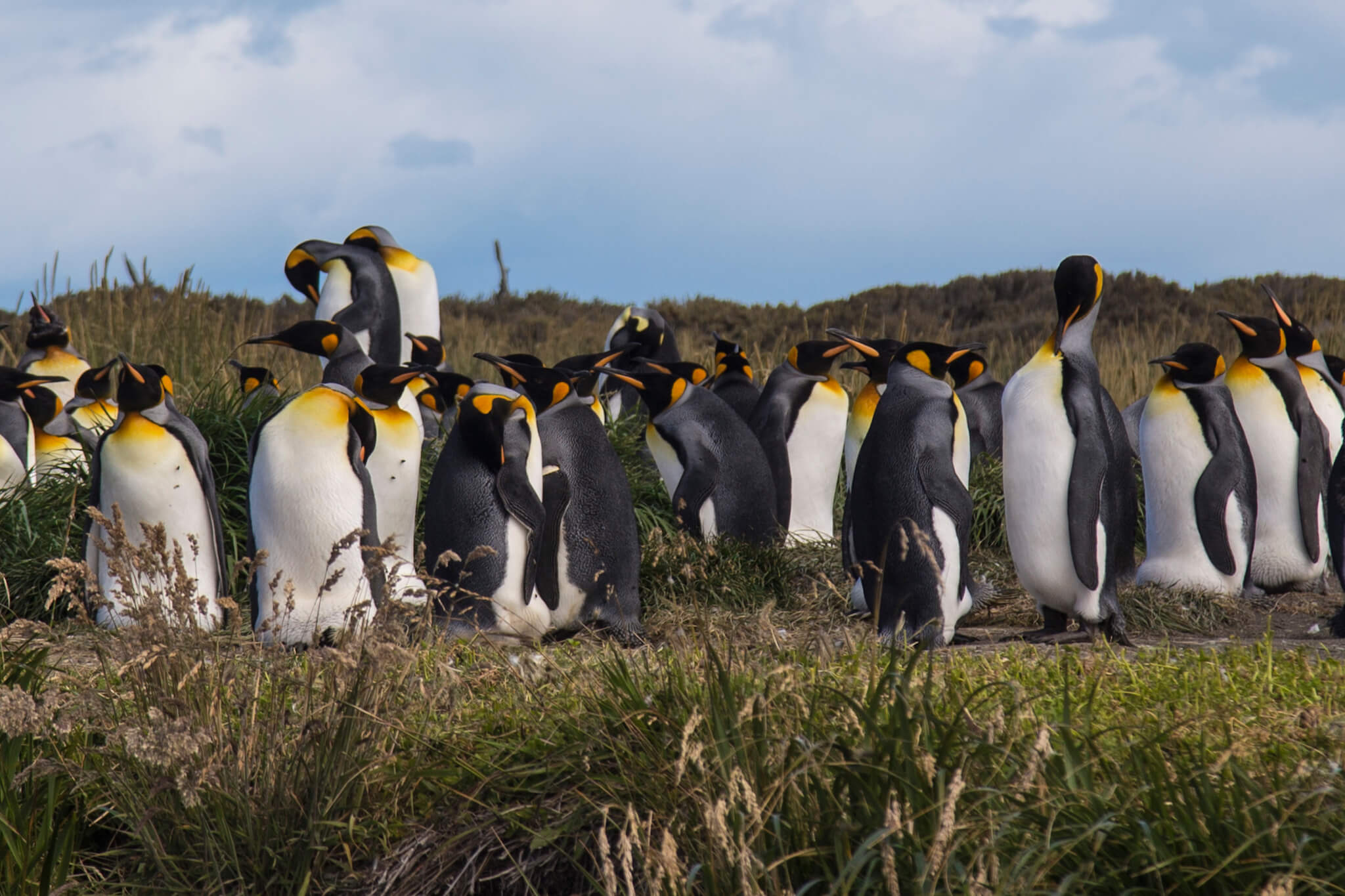
They feed exclusively in the sea. Their hydrodynamic shape and waterproof, heat-insulating plumage enable them to dive to depths of 70 to 200 m to feed on fish.
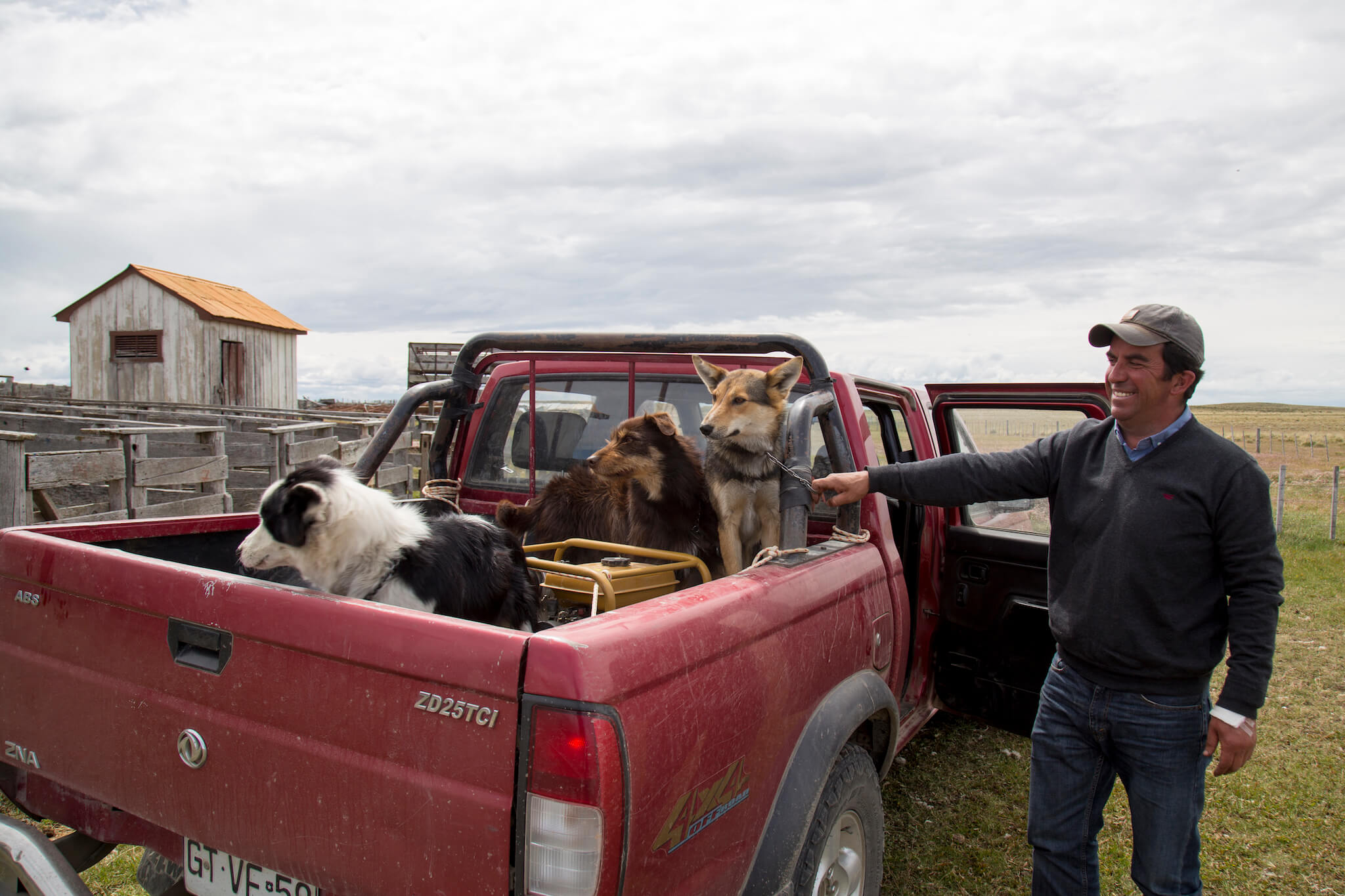
In the middle of the pampas, just outside the king penguin park, a man agreed to give me a lift after a short 15-minute wait on the side of the track. What was supposed to be a 10-minute drop-off turned out to be an 8-hour carpool. Santiago is an Argentine gaucho. He owns thousands of hectares of land on which over 4,000 sheep graze. With his horse and five dogs, he works alone most of the time to herd them. He can spend up to three days roaming the pampas with his animals.
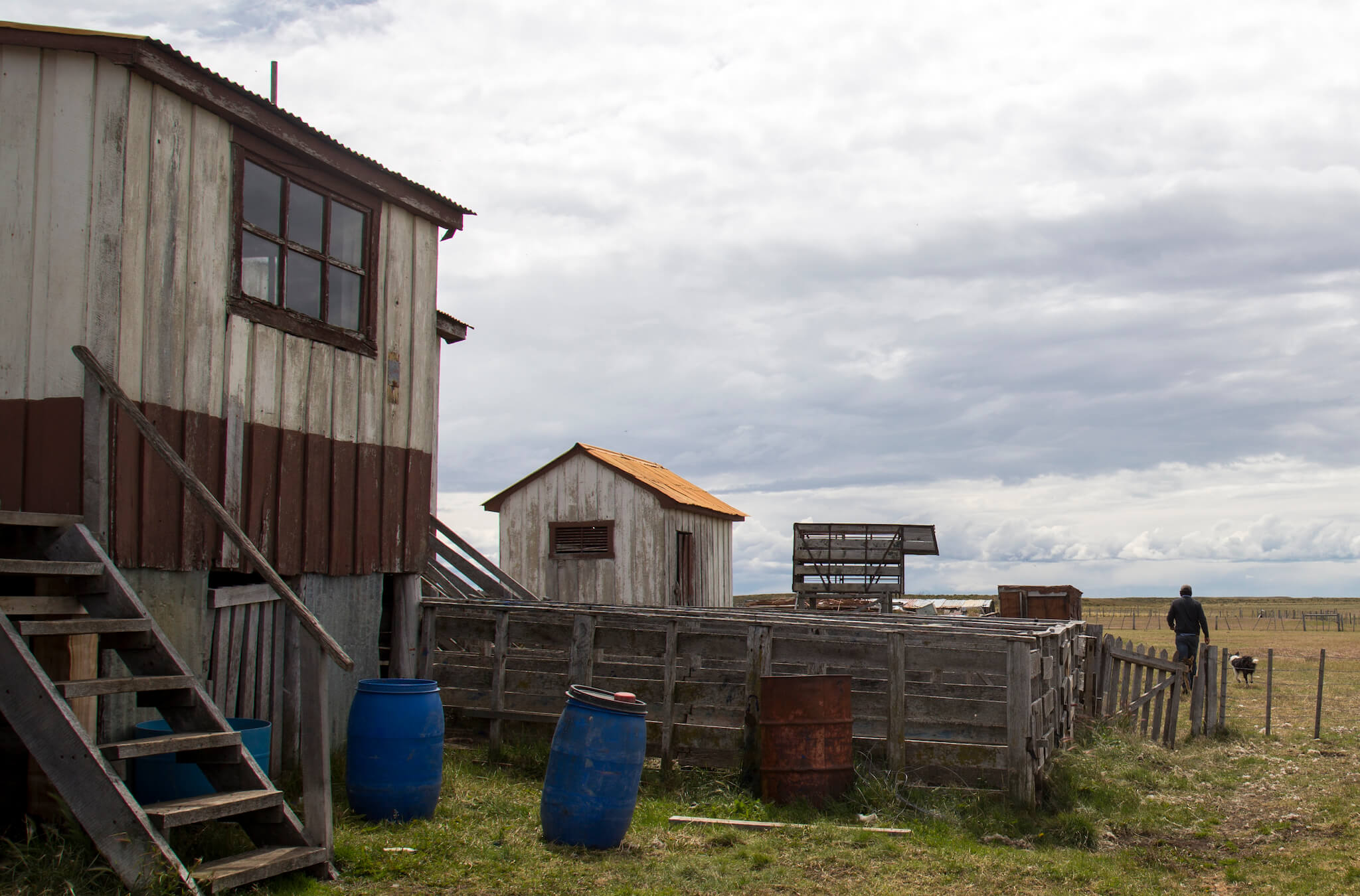
Santiago is new to the area. He moved here four years ago from the Santiago de Chile region. His estancia is huge. There are numerous buildings, including stables, a kennel, sheds and barns for shearing sheep once a year.
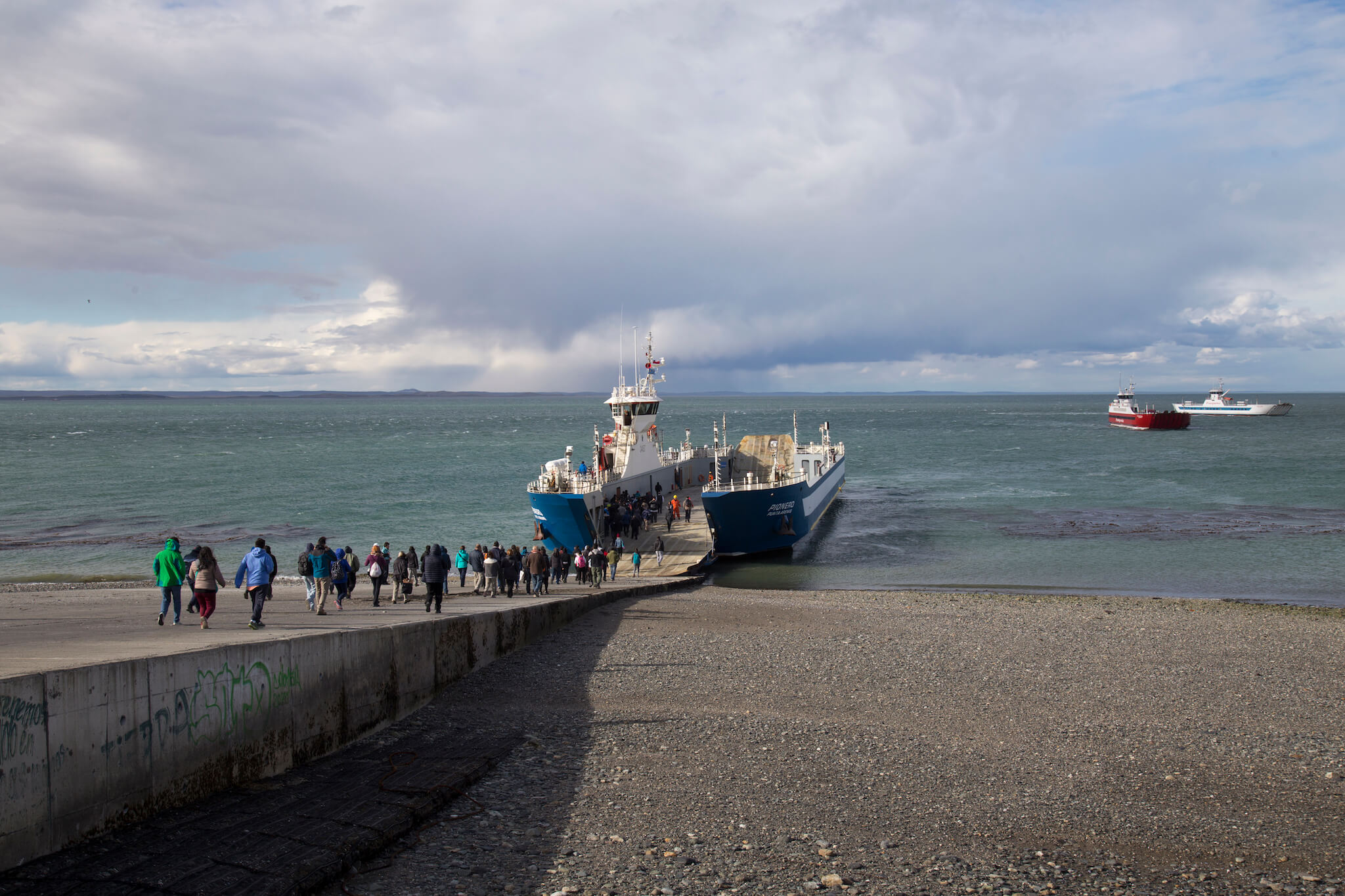
Tierra del Fuego lies at the confluence of the Atlantic Ocean to the east and the Pacific Ocean to the west. It is an archipelago separated from Patagonia by the Strait of Magellan. Taking the ferry is the only way to reach the mainland. The currents and winds in the Strait of Magellan are so powerful that we were stuck on the shore for 5 hours.
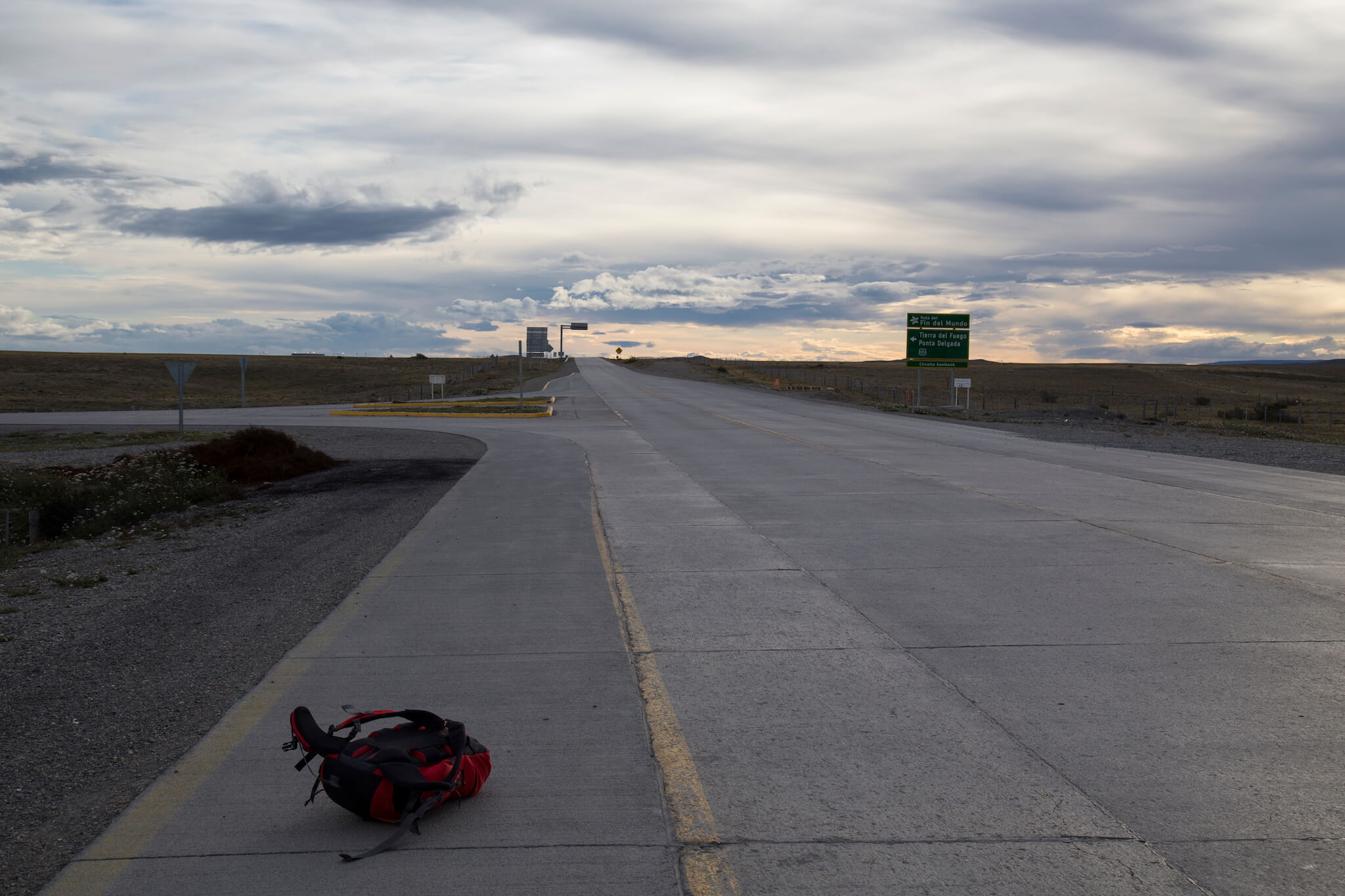
It was at this intersection that our paths crossed with Santiago. He was heading for Punta Arenas, capital of Chile’s southernmost province, while I was heading north towards Rio Gallegos. I would have spent many long hours chatting with him. About Chile, about his new life in Patagonia, about his wife he was joining for the weekend, about his “gaucho” job, which fascinates me, about France, about my trip… We exchanged contact details. I was so interested in his gaucho life that, before I closed the door of his 4×4, he said, “When you come back, we’ll go horseback riding and I’ll show you everything.
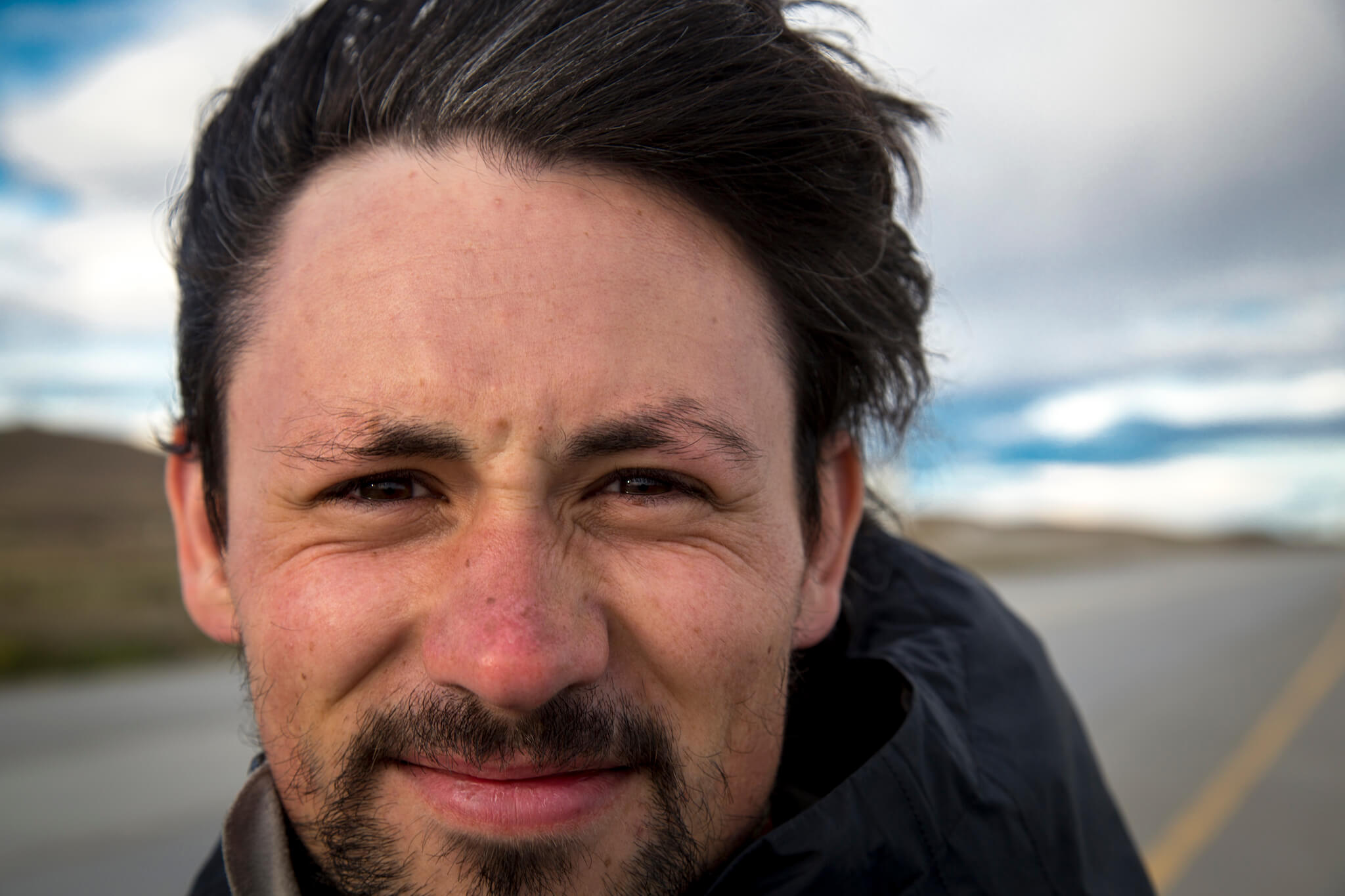
Patagonia is swept by very violent winds. This is why sailors have nicknamed the coast and the South Atlantic “the roaring forties” and “the howling fifties”. As I stand on the side of the road, hoping for a car to stop, the gusts push my hair back, the wind puffs up the hood of my windbreaker, while the black fabric snaps frantically.
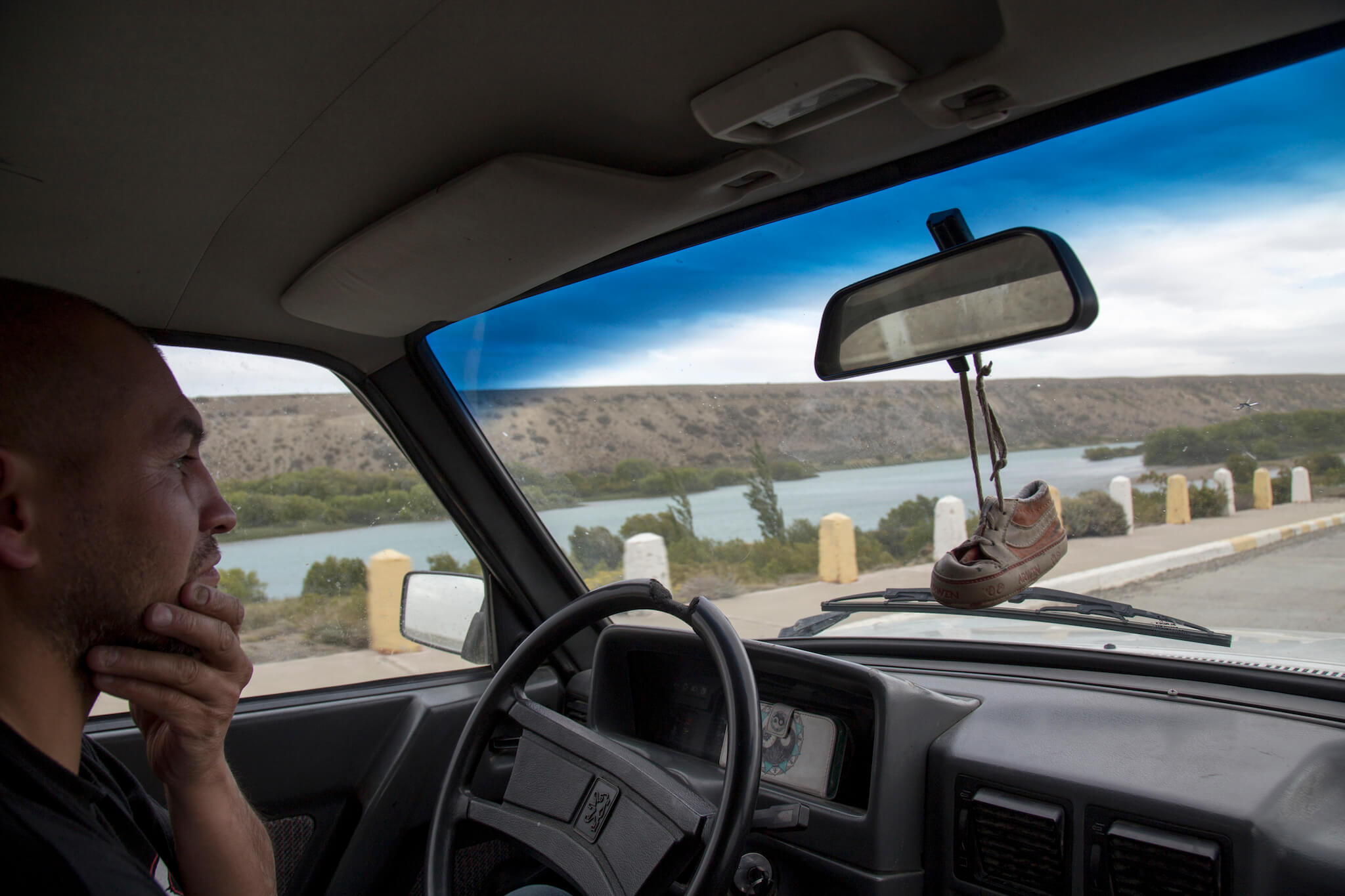
On the outskirts of Rio Gallegos in southern Argentina, I climb into an old Peugeot driven by a horse breeder. In the back are his three daughters. We’re heading for Comandante Luis Piedrabuena, 220 kilometers from here. The family is going there to spend the weekend with friends.
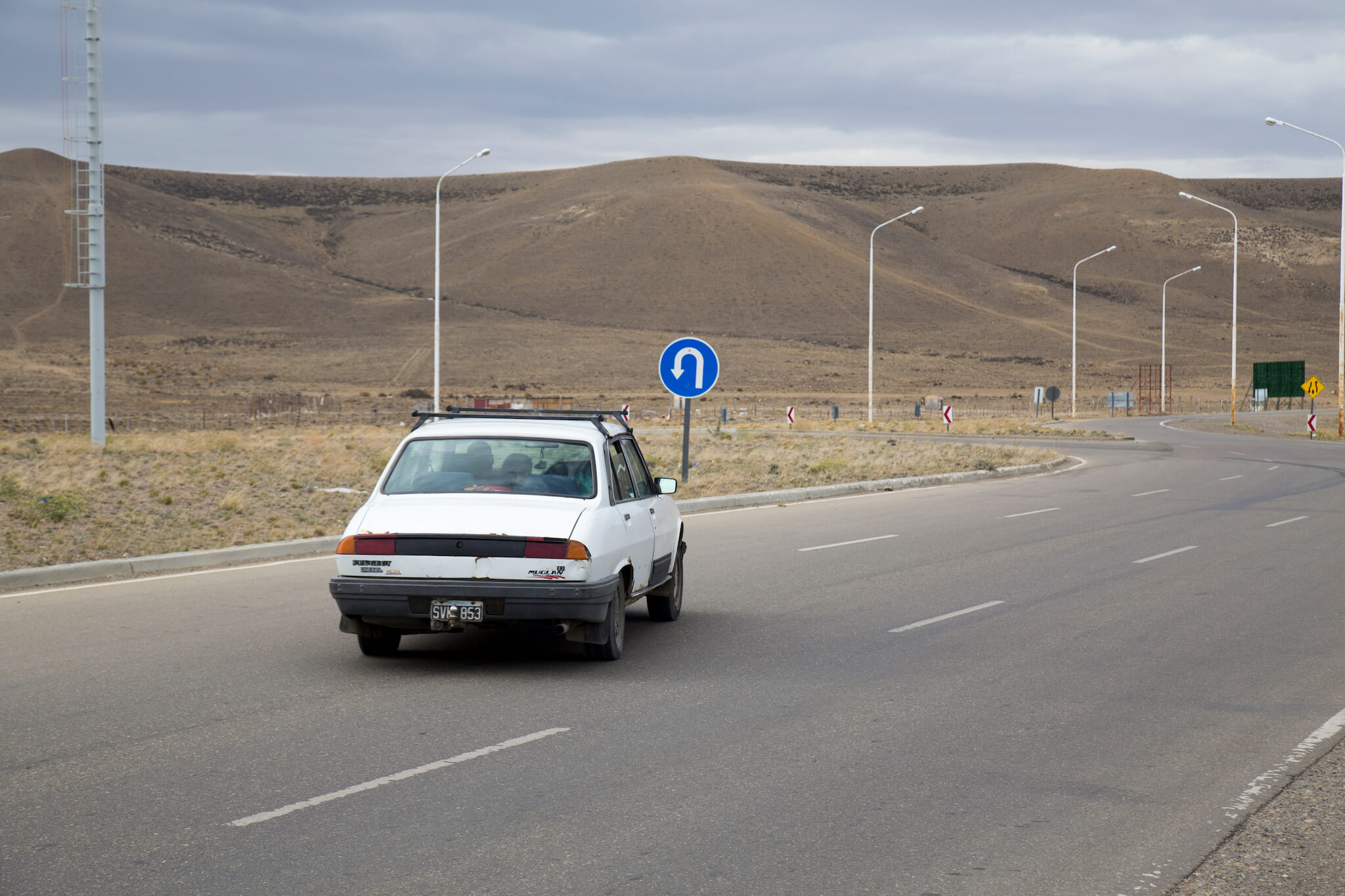
The tarmac in Argentina is pretty good and speed limits non-existent. Yet it takes us more than 5 hours to make the trip. The car is in a state of disrepair, not exceeding 60 km/h.
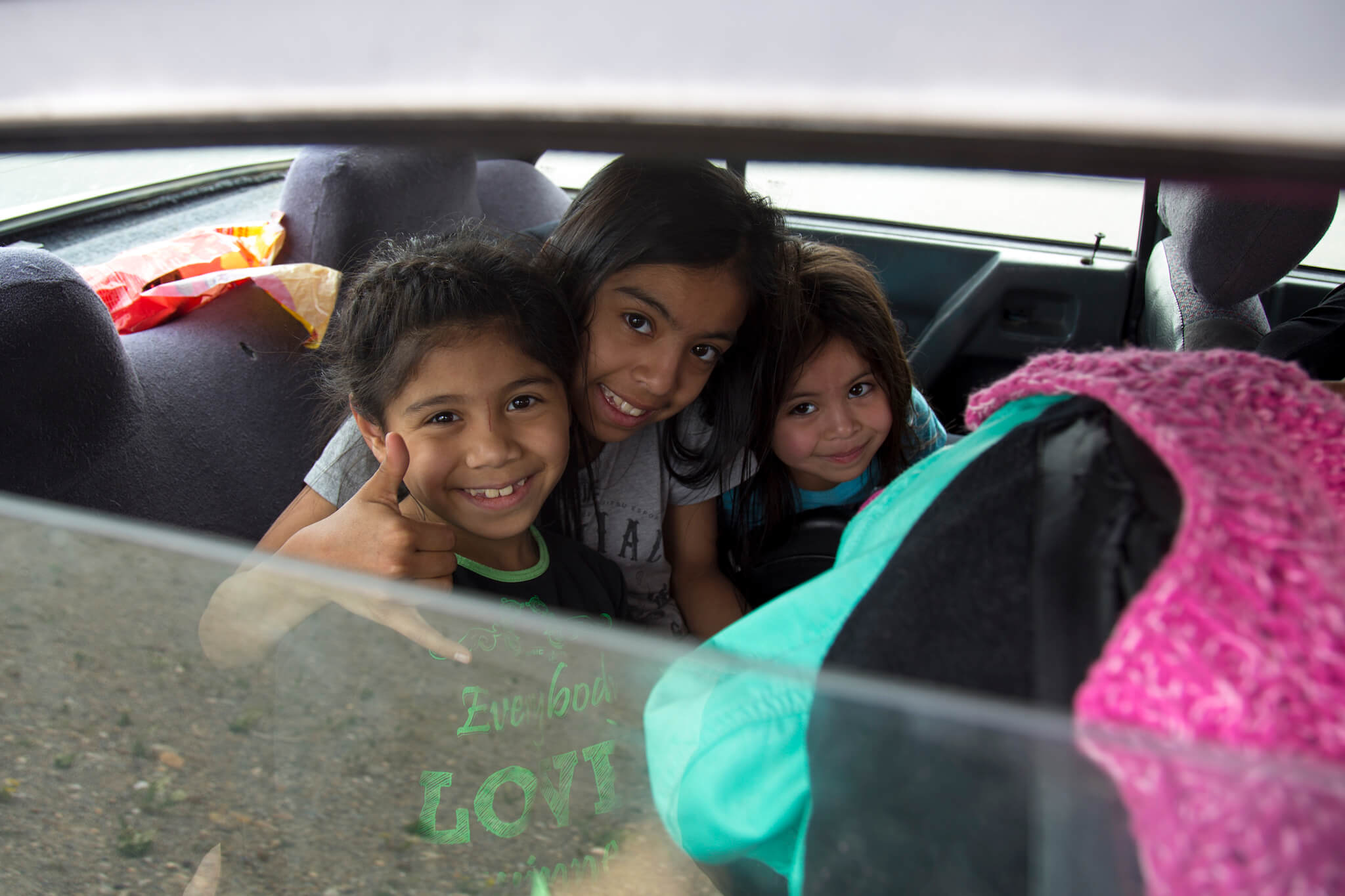
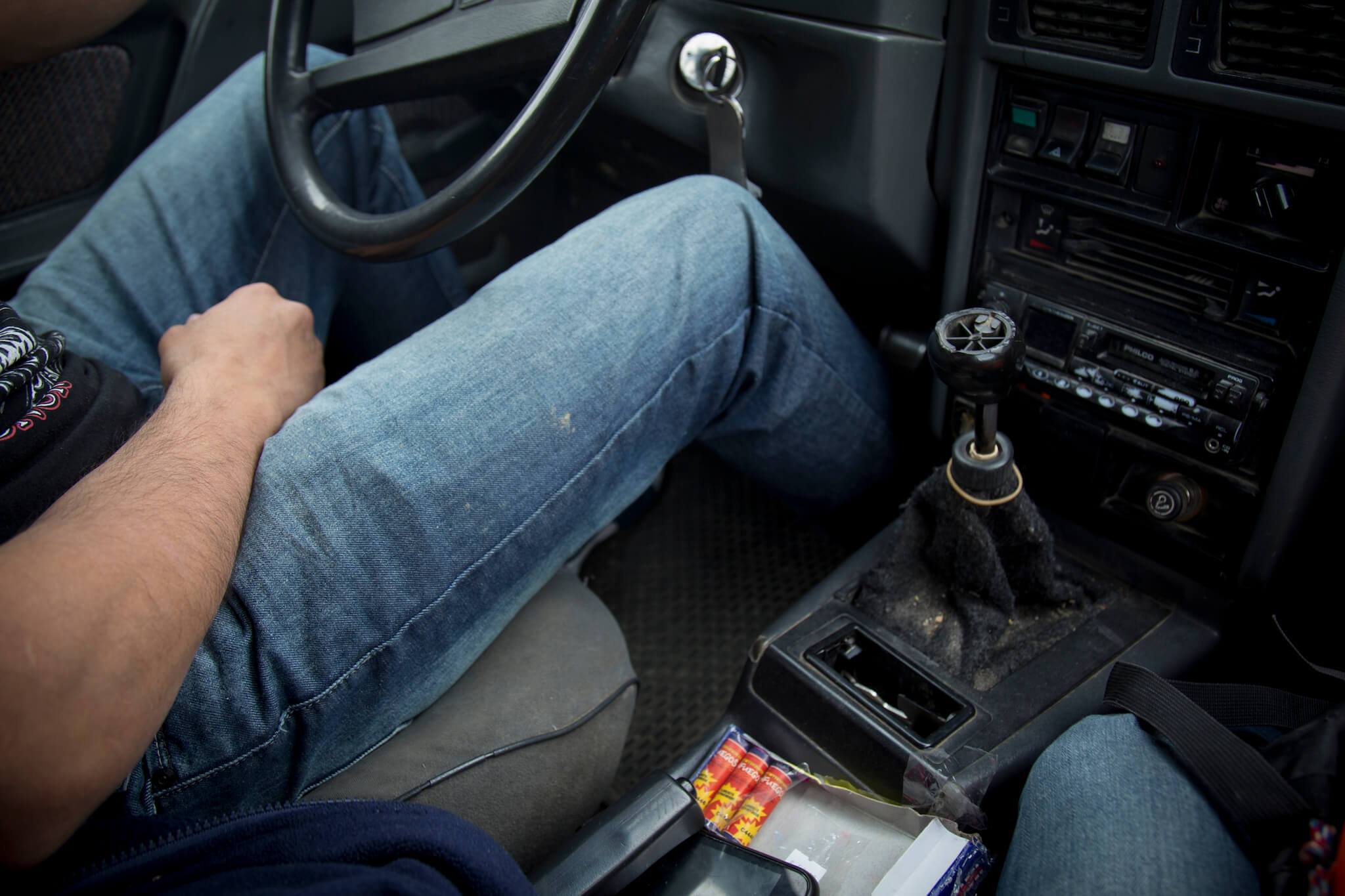
But above all, we’re very slow because we stop all the time. Every time we come across llamas called “guanacos”, the father of the family lights a firecracker and throws it in the direction of the herd to scare them off. He explains that, unfortunately, too many road accidents are caused by their presence… Next to the gearbox, he keeps the firecrackers close at hand.
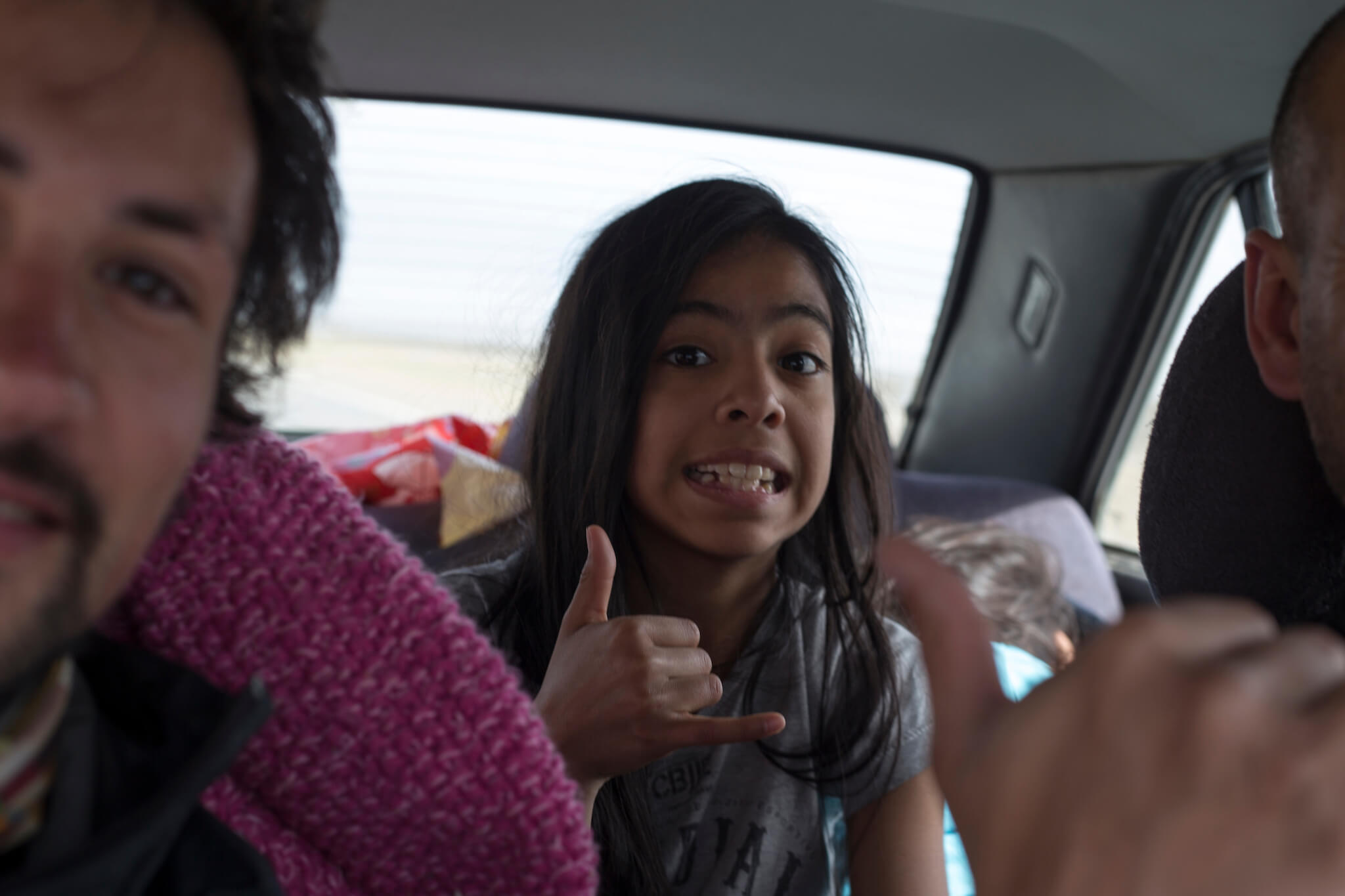
Inevitably, the explosion provokes great bursts of laughter in the back seat.
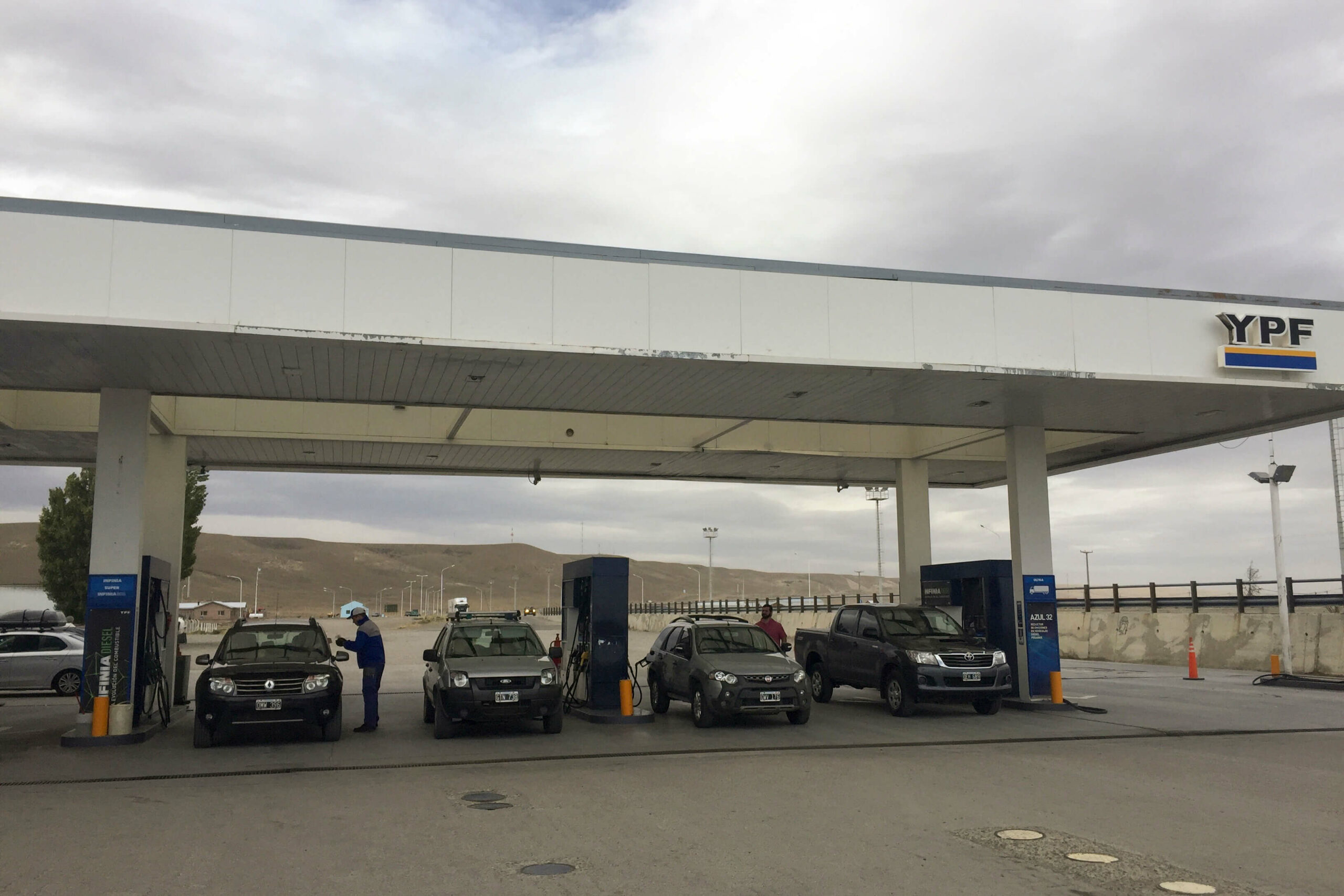
Hitchhiking with your thumb in the air on the side of the road is both inefficient and frustrating. Conversely, you can save a considerable amount of time by asking drivers directly at service stations. On the “Ruta 3”, cars head either south or north. On average, I wait half an hour before finding a seat. The reasons for refusal are varied, and I invariably take them with a smile. Sometimes, my interlocutors don’t have a seat, don’t go far enough, don’t go in the same direction as me or simply don’t feel like letting a stranger into their car. YPF service stations dot the Argentine road network. They are reassuring little bases in the vastness of the pampas. You’ll find absolutely everything you need here, making them an essential stopover before covering hundreds of kilometers.
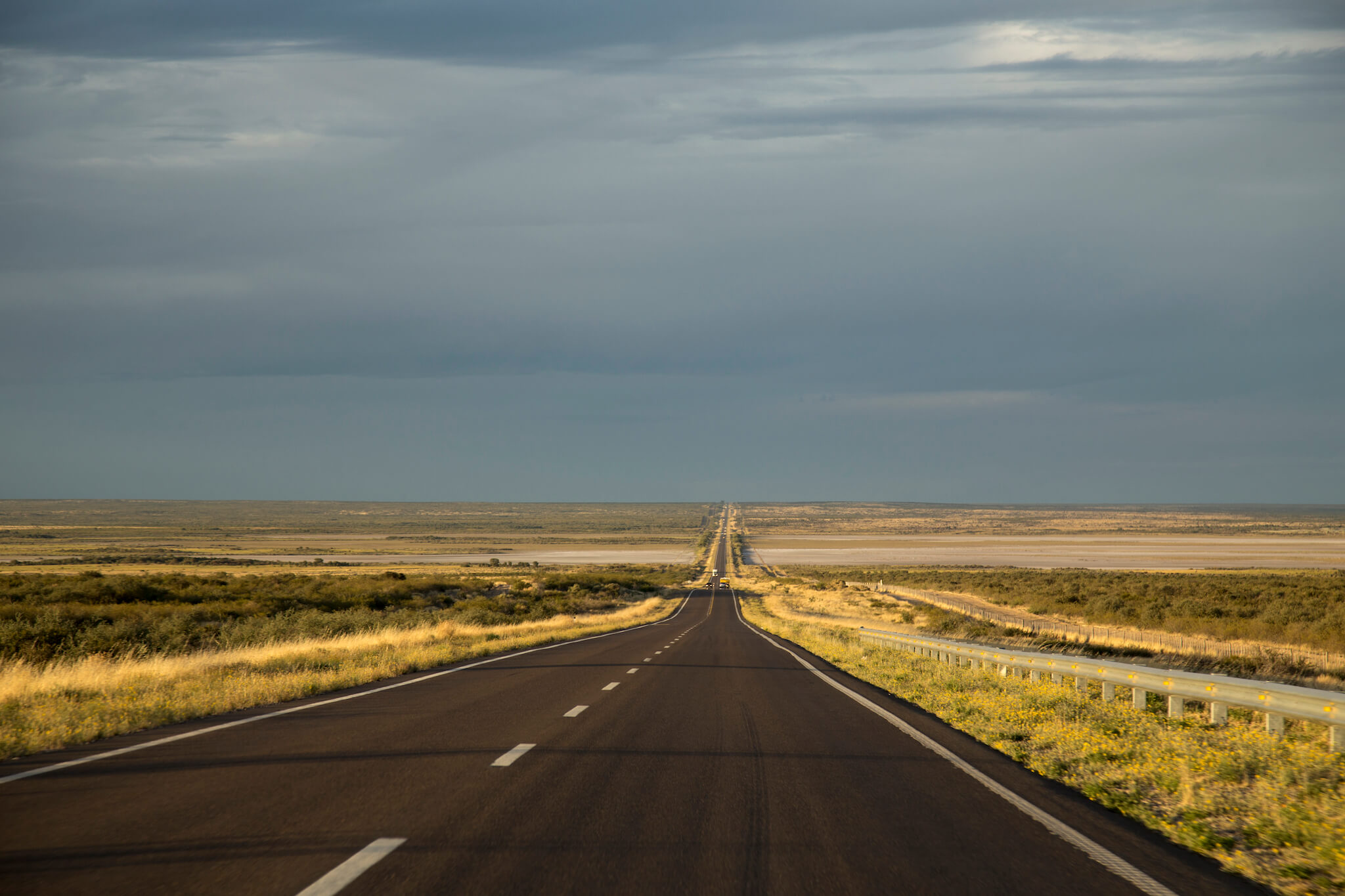
Argentina’s roads are two-lane. They are incredibly straight, which makes driving both difficult and monotonous. You sometimes have to travel several hundred kilometers of virgin pampas before you reach a town.
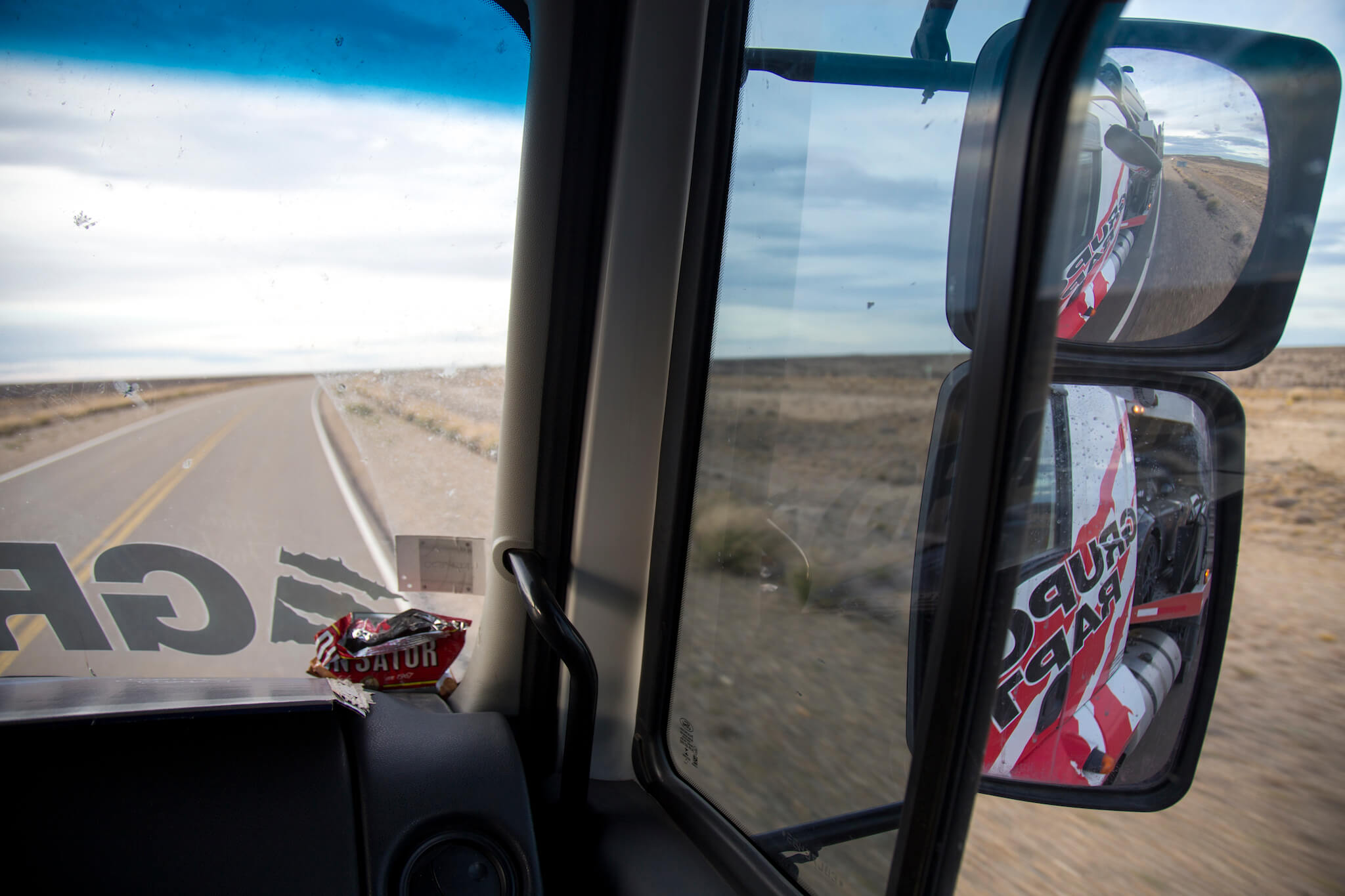
At a YPF service station, Luis, an Argentinian, offers me a lift in his truck. He had seen me that very morning with my “Buenos Aires” cardboard box at another station further south. Without hesitation, I jump into the passenger seat. Every week, Luis drives from Buenos Aires to Rio Grande. Then back to Buenos Aires. A round trip of 8,000 kilometers! In the back of his truck, he hauls cars. Sometimes damaged, sometimes new or used, he delivers them to dealers on the road.
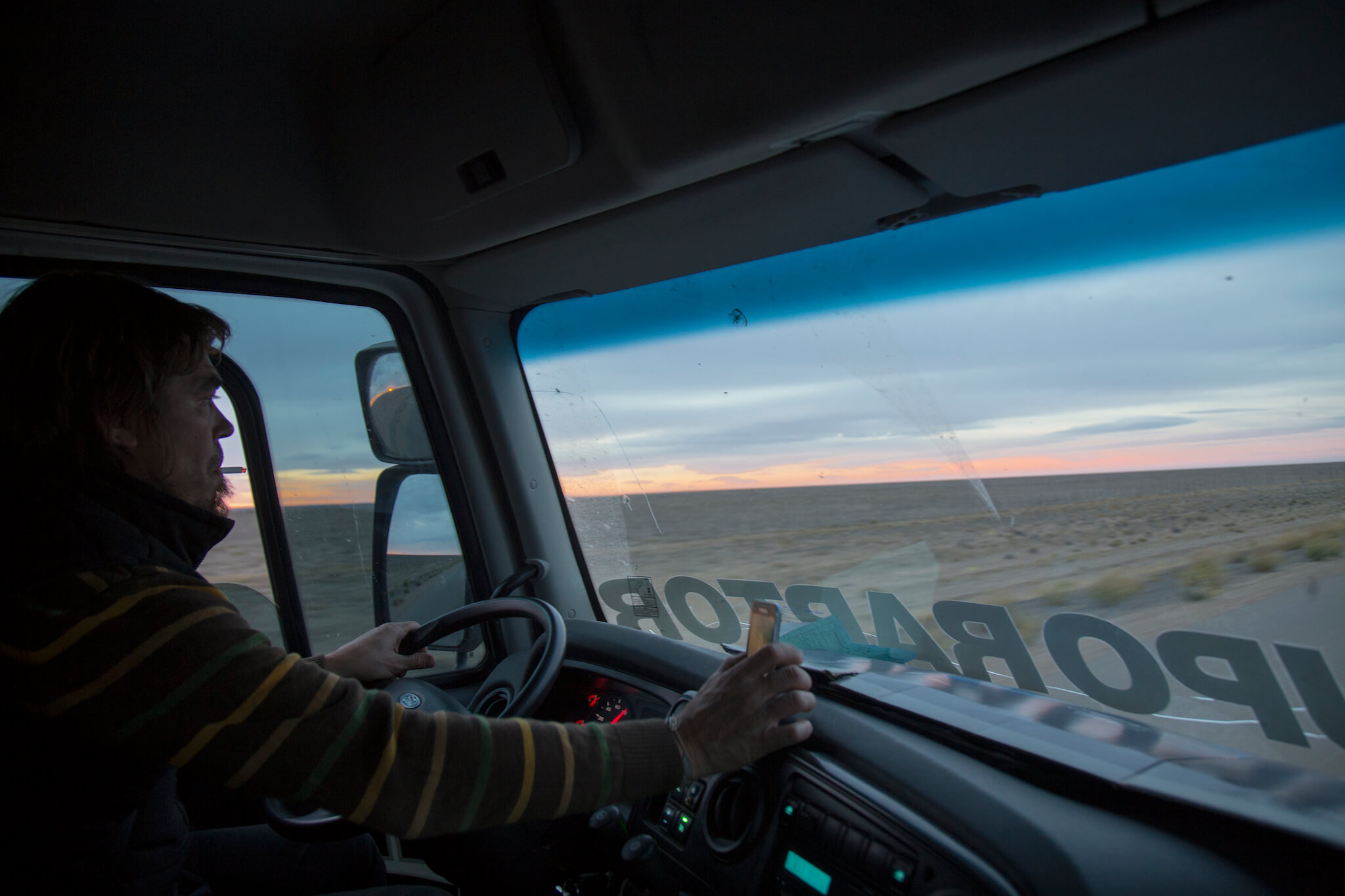
Although he readily admits to me that his job is difficult, with occasional pressure from his employer, he appreciates the simplicity of his existence. A bunk, mate (the typical Argentine drink), tobacco and stops at gas stations to sleep, eat and wash. Showing me the pampas, he says, “and for my needs, I’ve got it all to myself! He knows the route almost by heart, and even knows where to find a phone signal. For two days, I share his daily routine. We stop to eat at gas stations. We share memories of Europe. Luis was a truck driver in Spain for many years. He left his son there with his mother, from whom he has now separated.
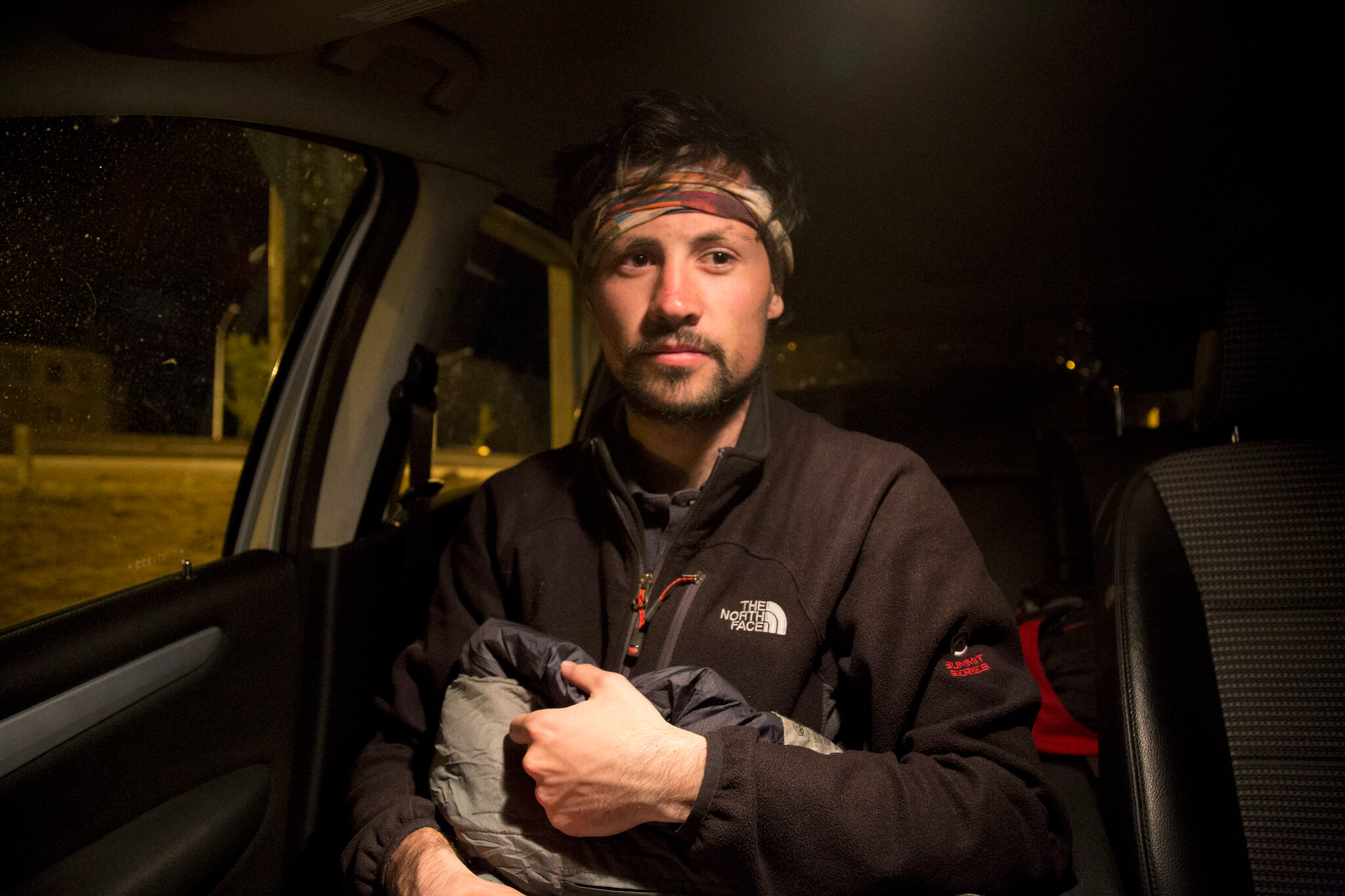
At around 1:30 am, Luis stops his truck in a village. He offers me a place to sleep in the new Mercedes he’s transporting. Tired, I accept instantly, unfold my sleeping bag and lower the sedan’s leather seat to an almost horizontal position.
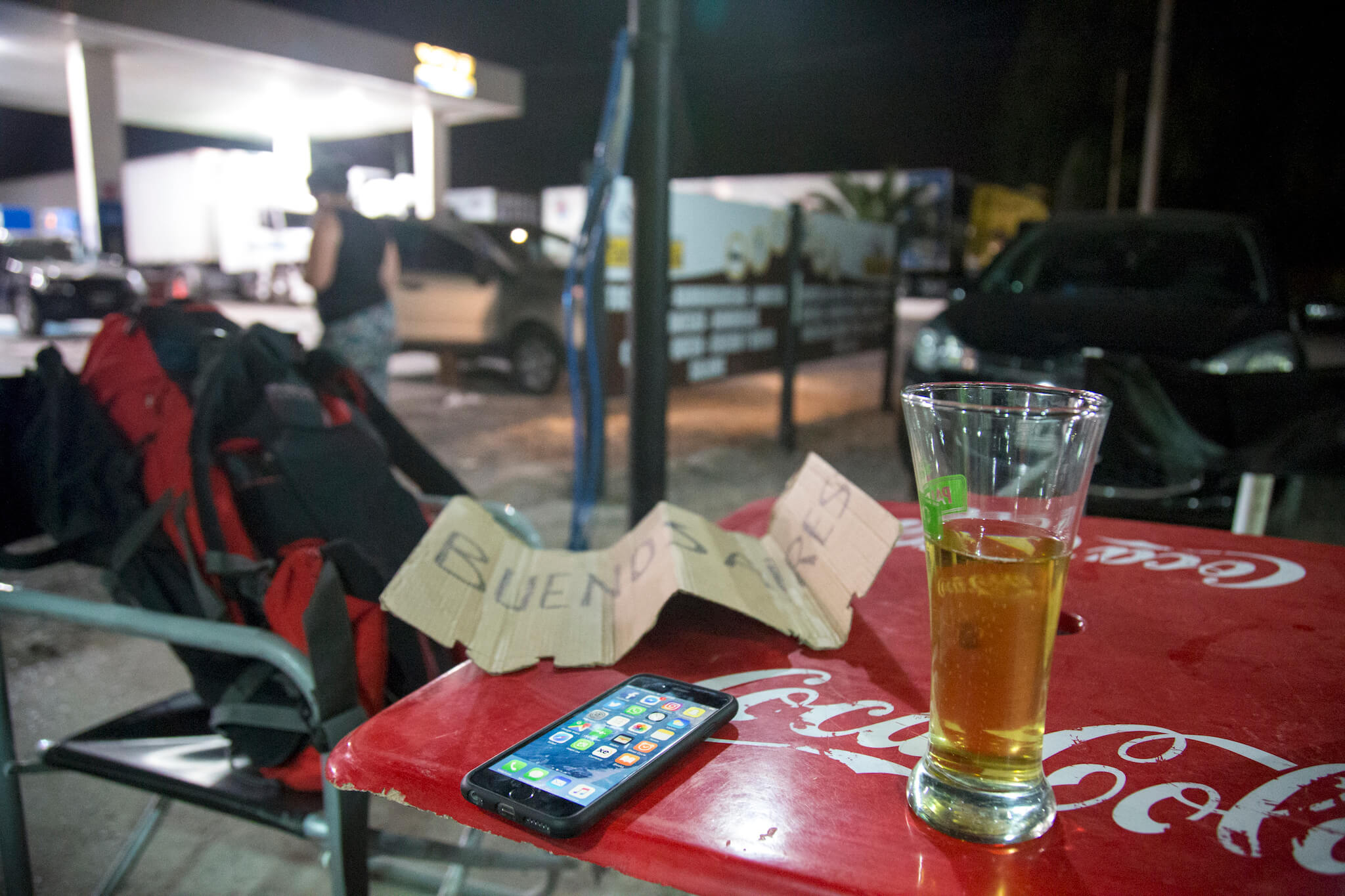
In 5 days I hitchhiked in around 15 cars and trucks from Ushuaïa to Buenos Aires, following the country’s Route 3, a distance of 3,200 kilometers. Hitchhiking is a great way of getting to know people. The vast majority of the time, drivers are talkative and eager to chat. I’ve had some excellent encounters and would definitely travel this way again. However, the dependence and the daily demands can be burdensome in the long run. For me, there’s nothing like the freedom of having your own means of transport.
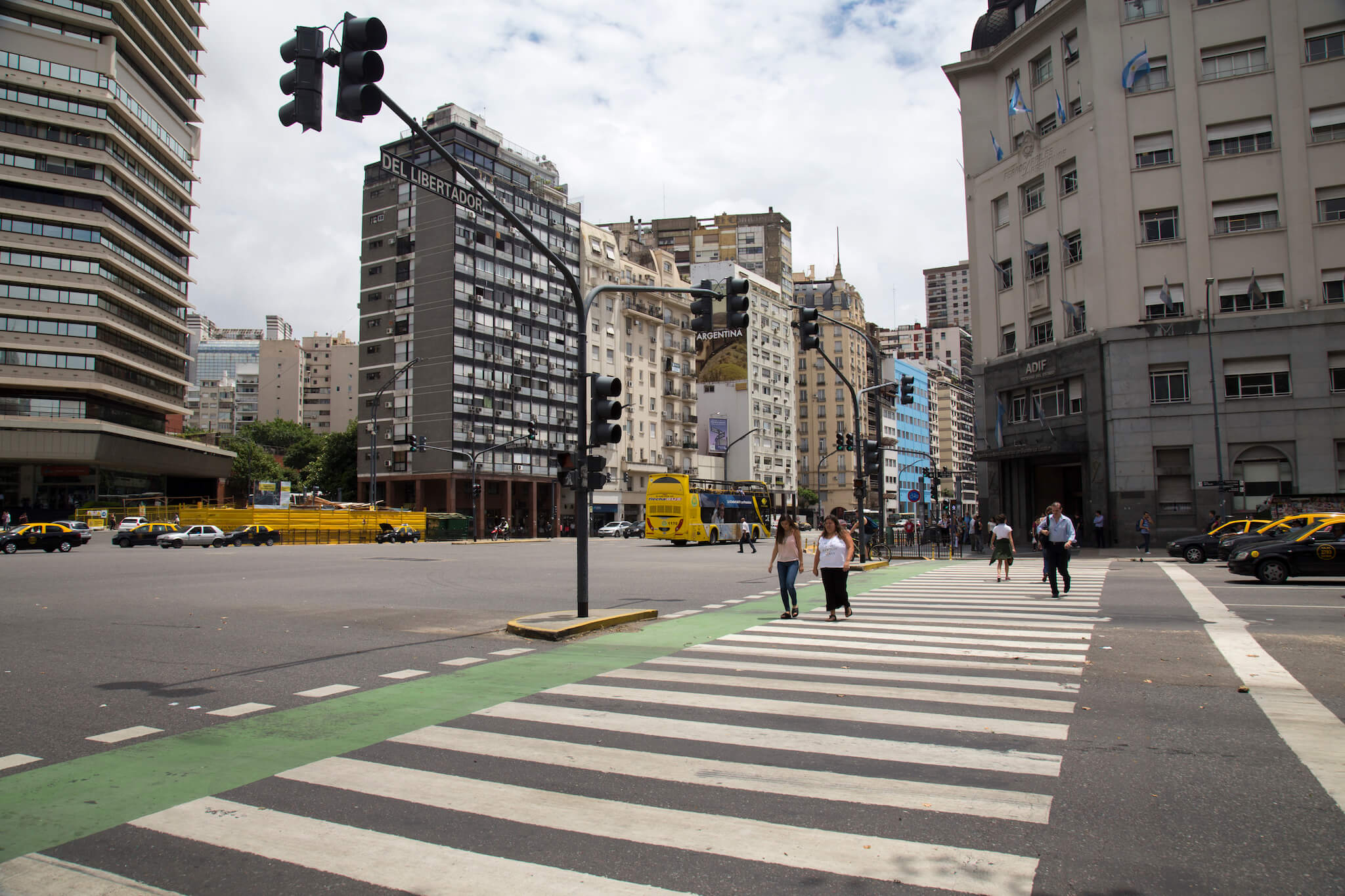
In Retiro, a district in the north of Buenos Aires. On foot, I discover Argentina’s capital.
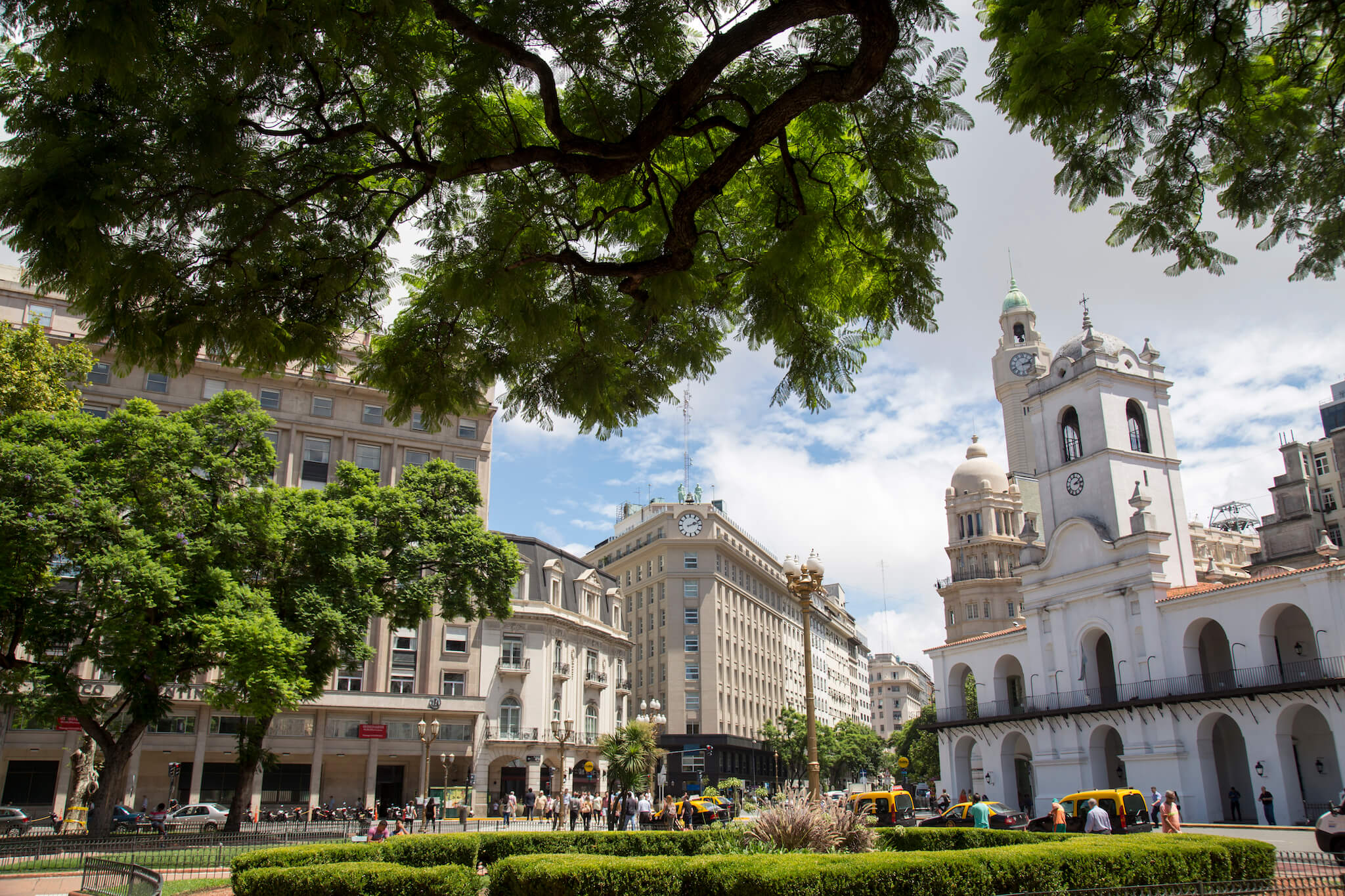
Plaza de Mayo, the nerve center of Buenos Aires. It is also home to the Casa Rosada, the seat of Argentina’s executive power.
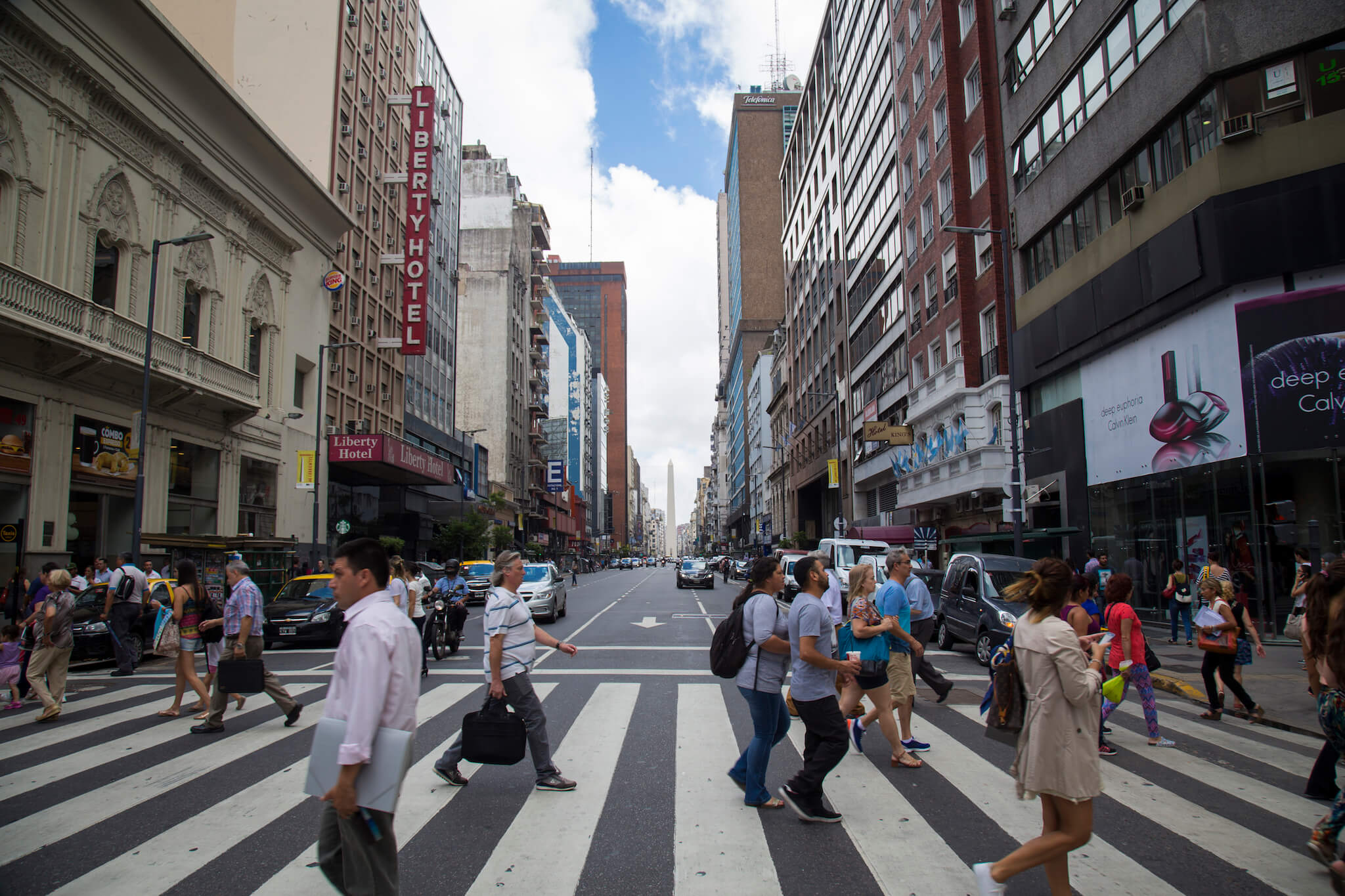
Avenida Corrientes. The city bustles with activity during the day, with pedestrians strolling the streets until dusk. In the background, the Buenos Aires obelisk, erected to mark the fourth centenary of the city’s first foundation.
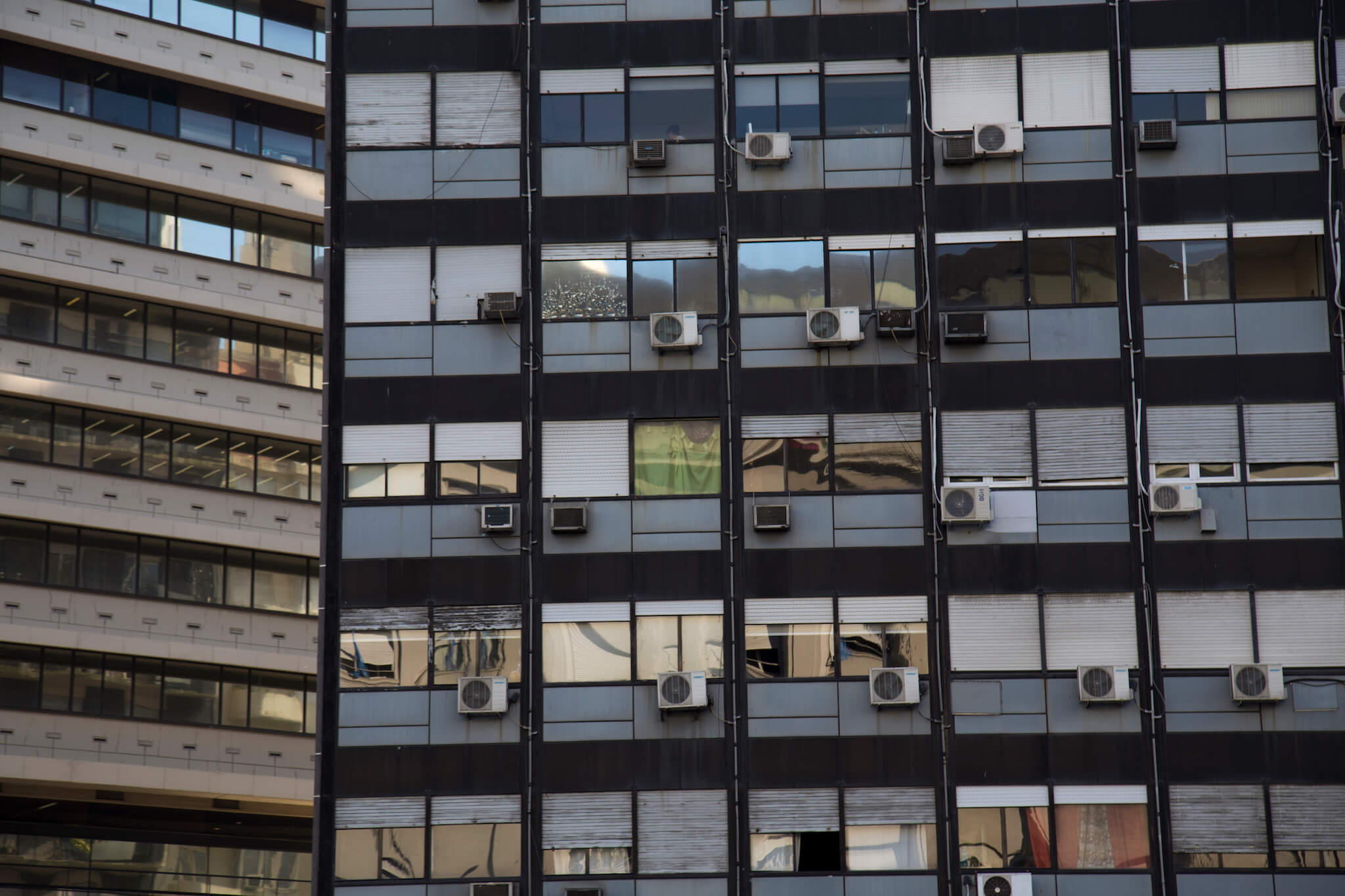
The heat in Buenos Aires in January is overwhelming, with the mercury climbing to 35°C and the air conditioners running at full blast in the apartments.
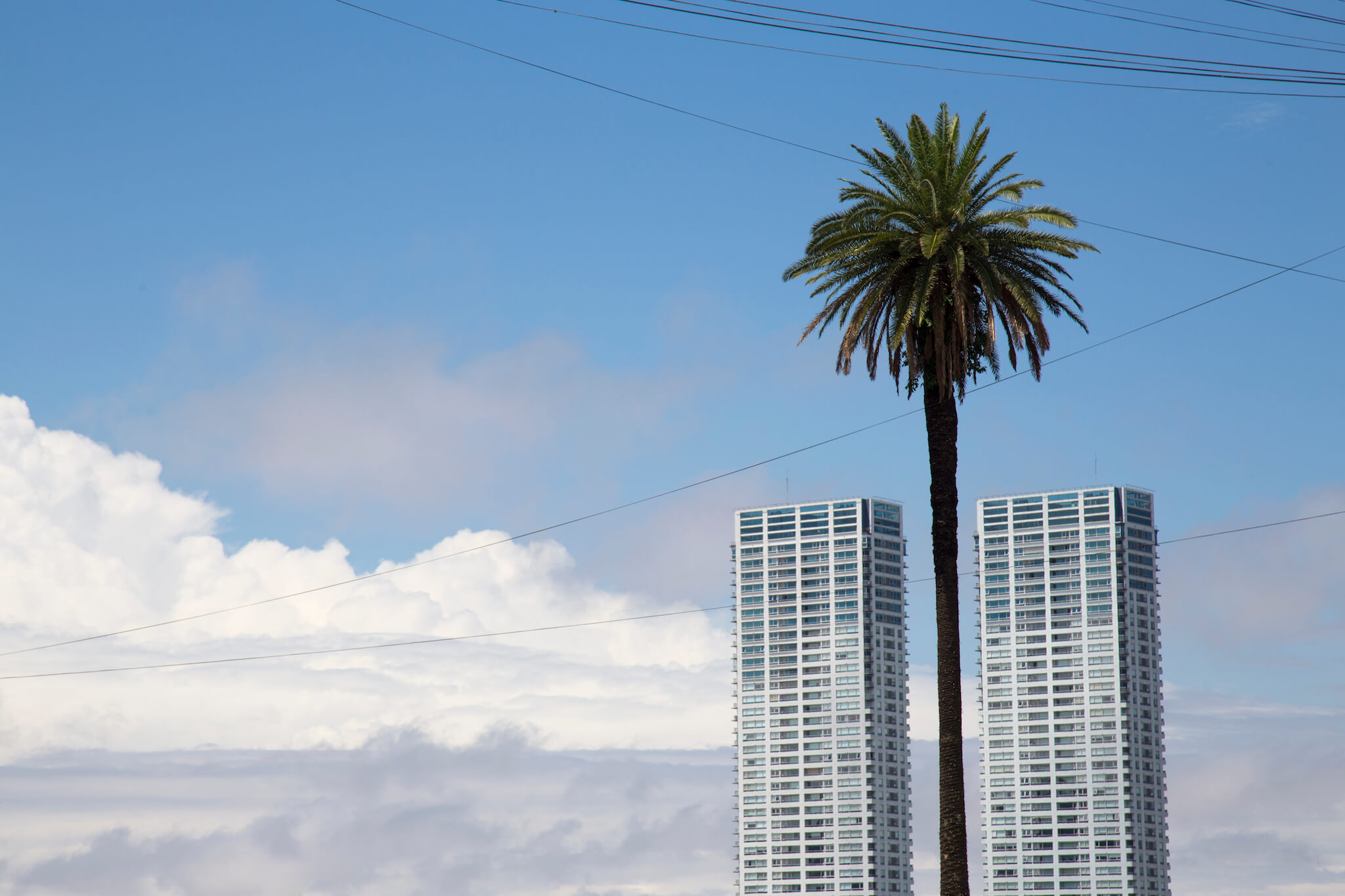
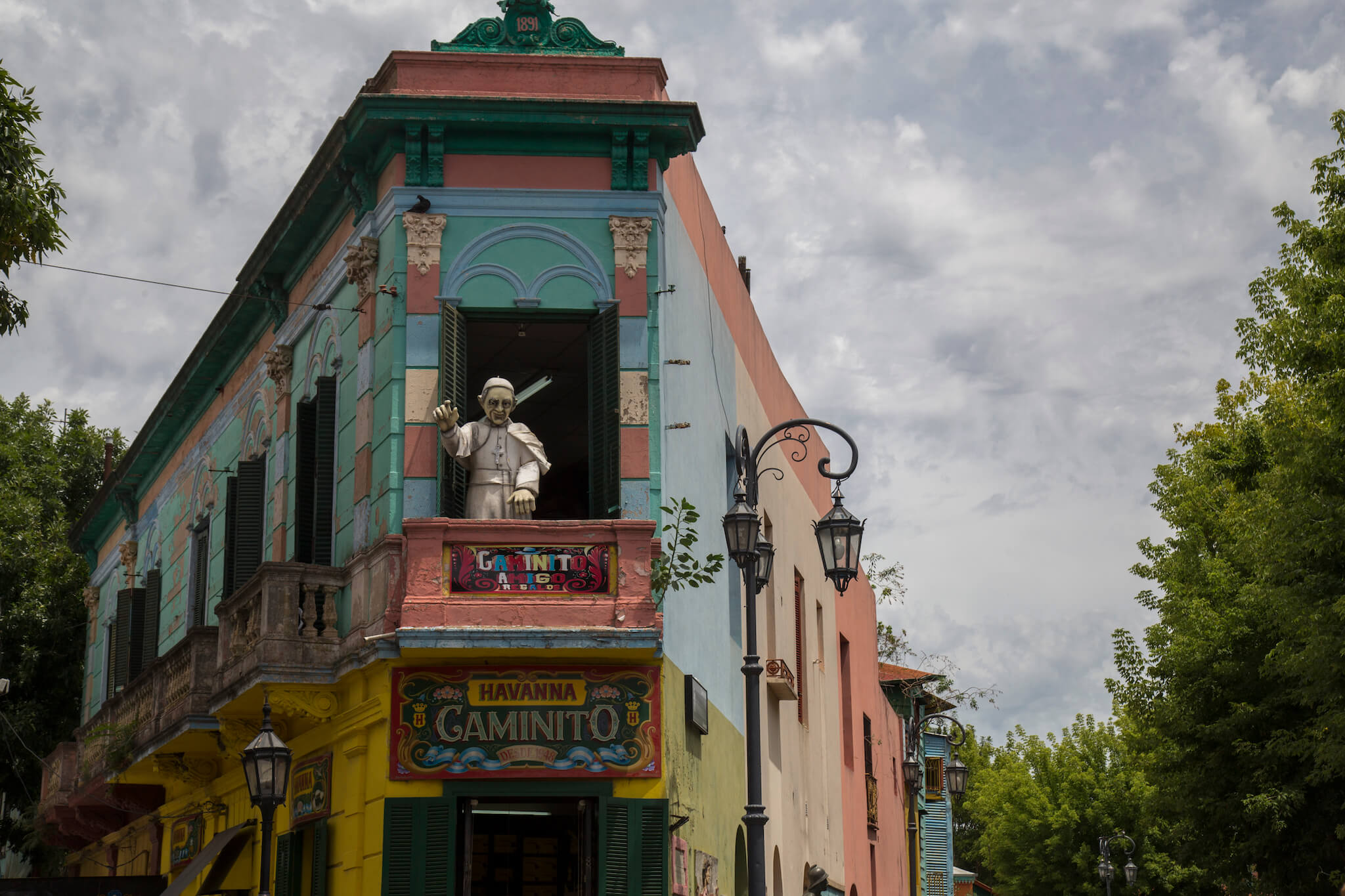
An underprivileged district of Buenos Aires, La Boca is home to many artists and tango dancers. The colorful facades of the houses make it an atypical place and a must-see for visitors.
A short stay in Uruguay before returning to France.
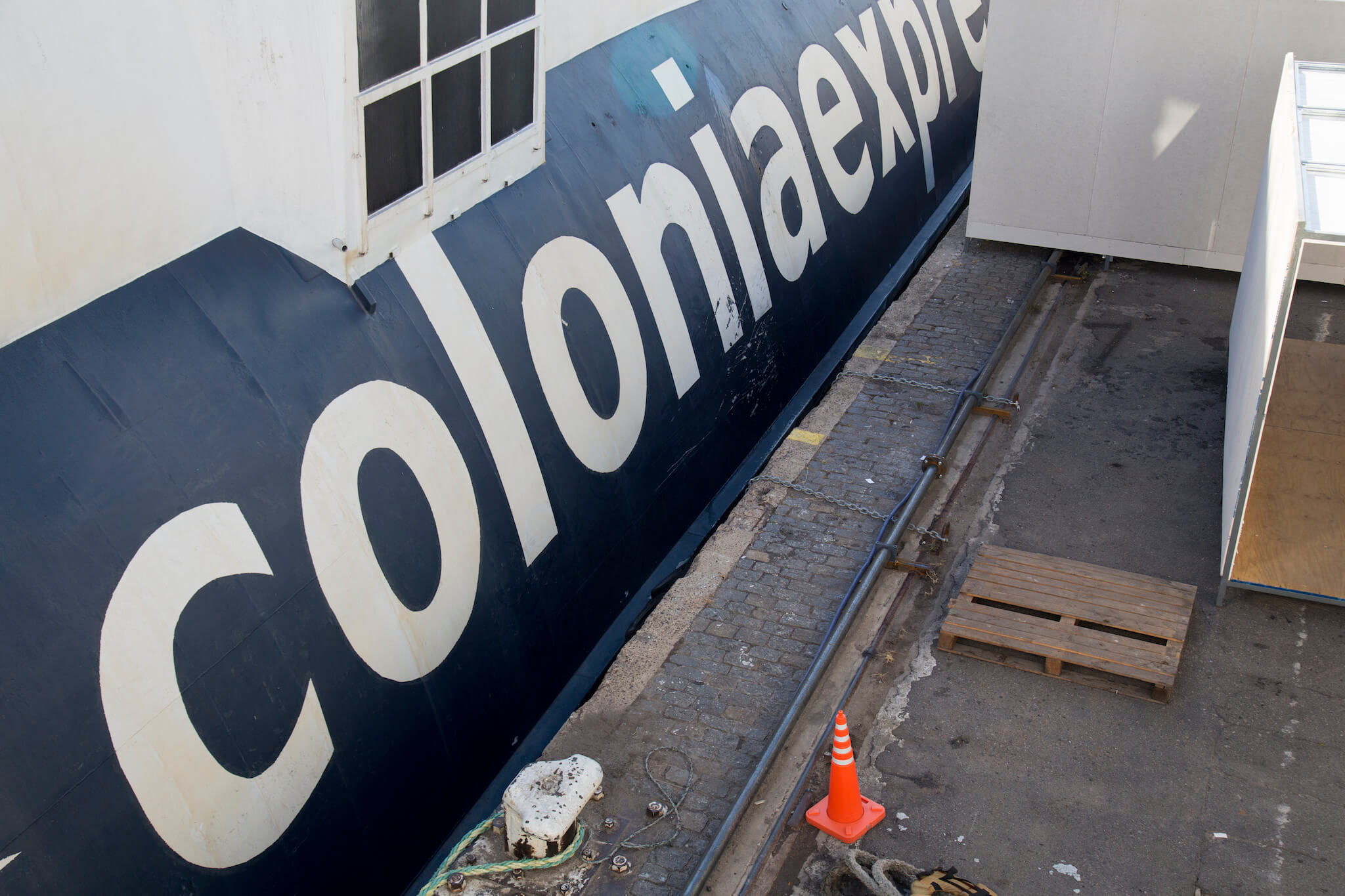
Uruguay is a stone’s throw from Buenos Aires. After wandering the length and breadth of the Argentinian capital, and with a little time to spare before catching my plane to Paris, I hop on a ferry to cross the Rio de La Plata and reach the Uruguayan town of Colonia del Sacramento.
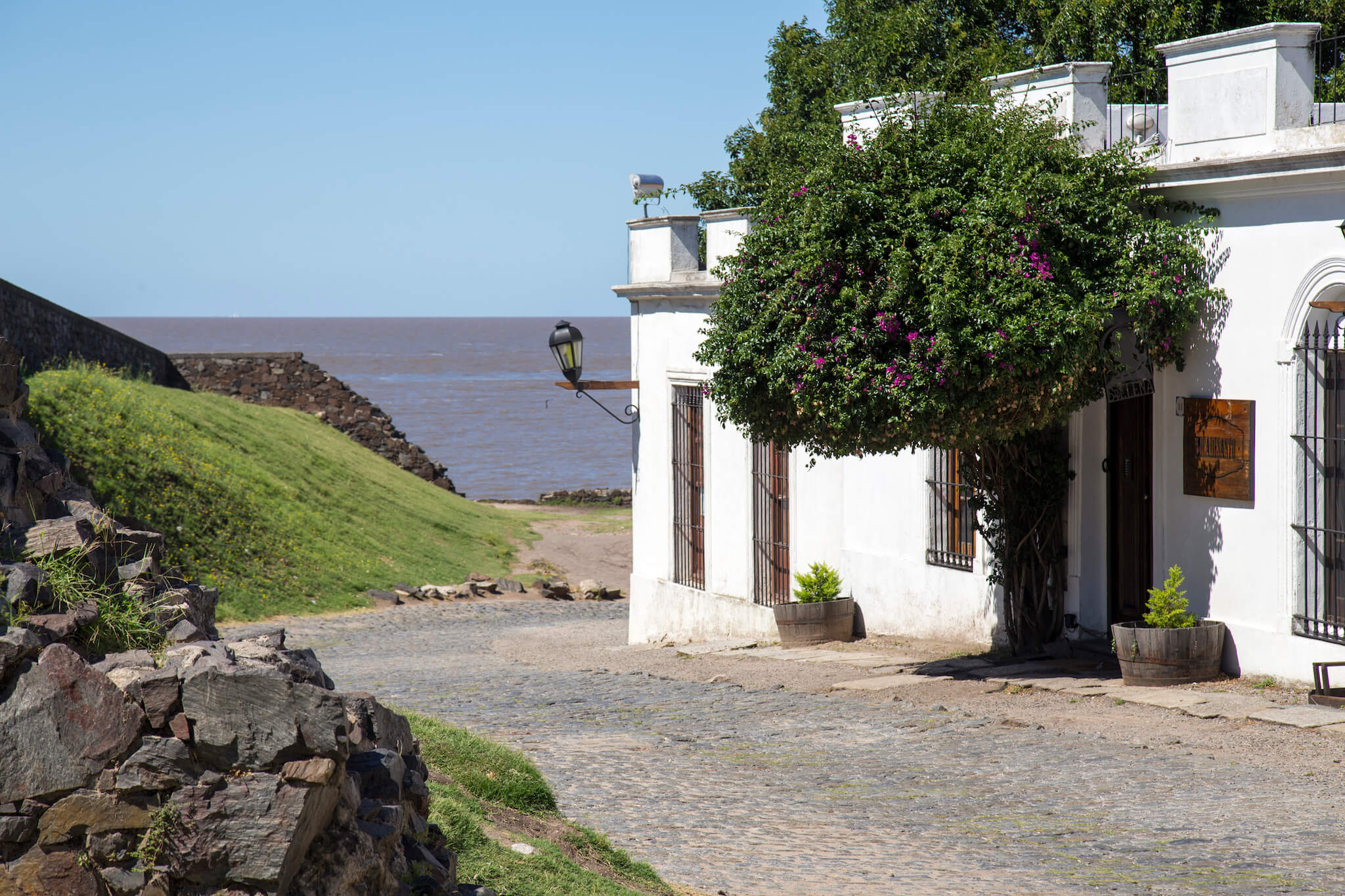
Founded by the Portuguese in 1680, Colonia is Uruguay’s oldest city.
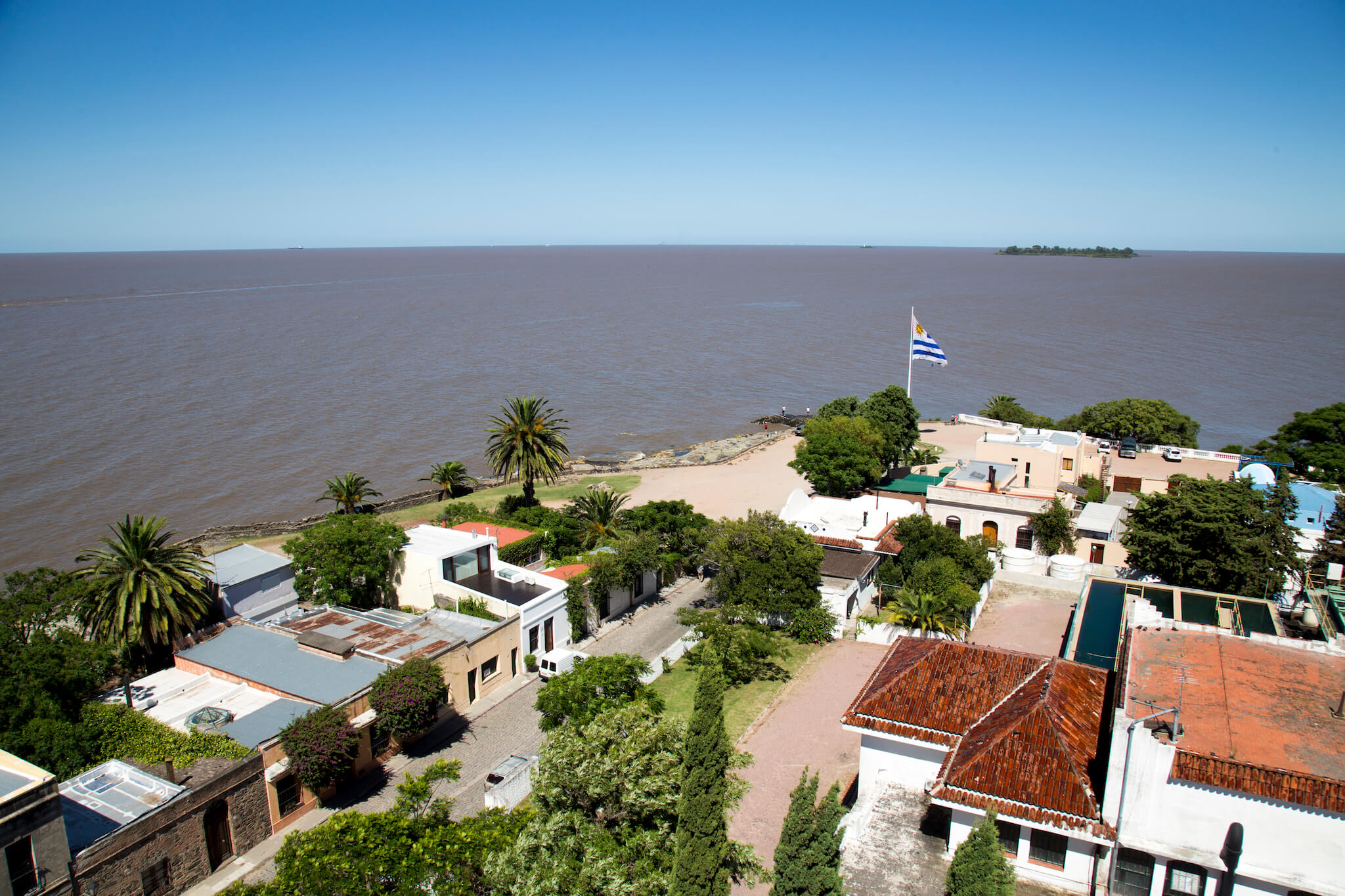
View from the top of the Colonia lighthouse. Buenos Aires is on the other side, 50 kilometers away.
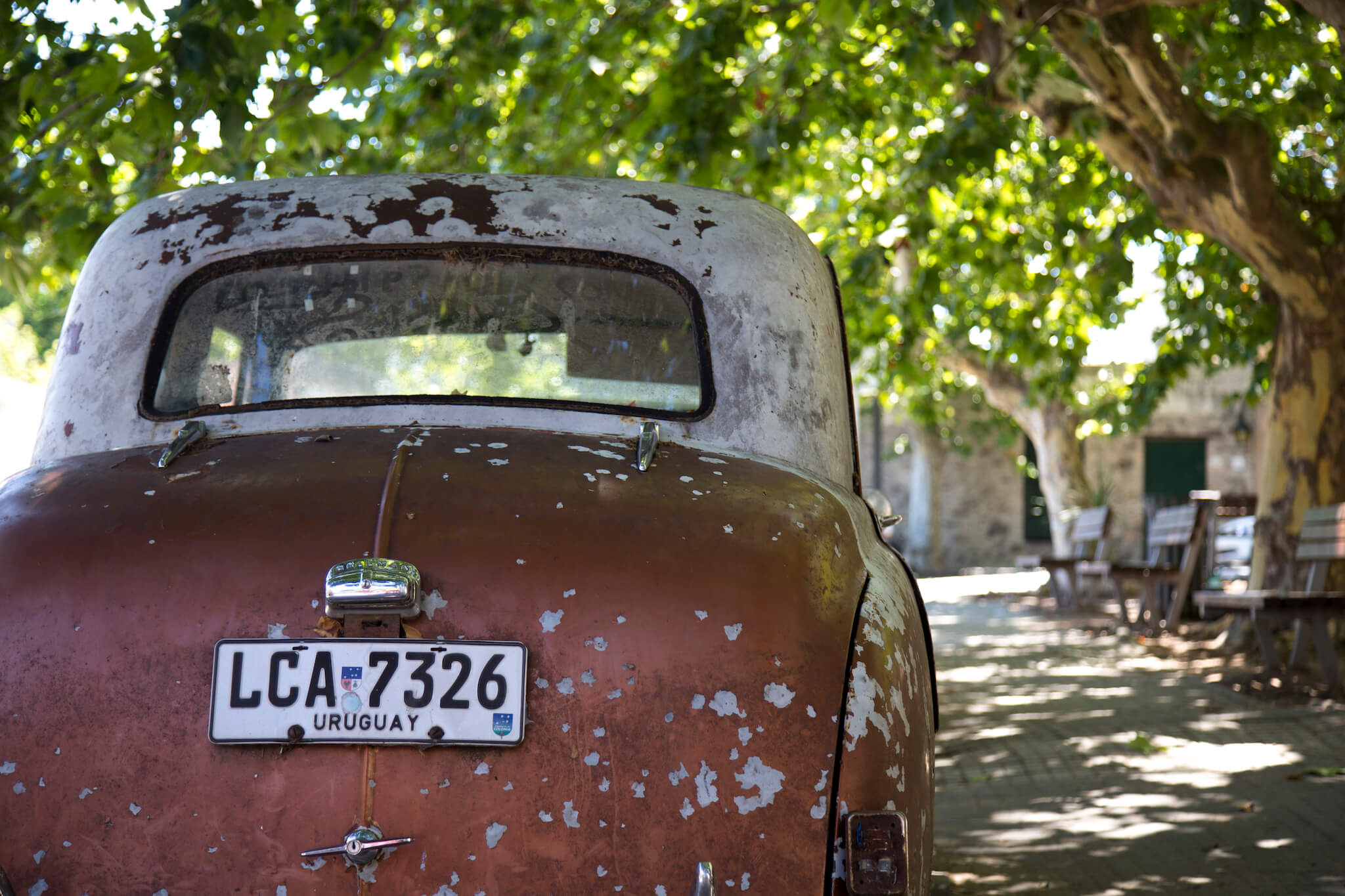
The cobbled streets of the colonial town are lined with plane trees. In the shade they provide, a man plays his guitar on the terrace of a restaurant. It’s cool and pleasant, and I’m overcome by a sense of calm.
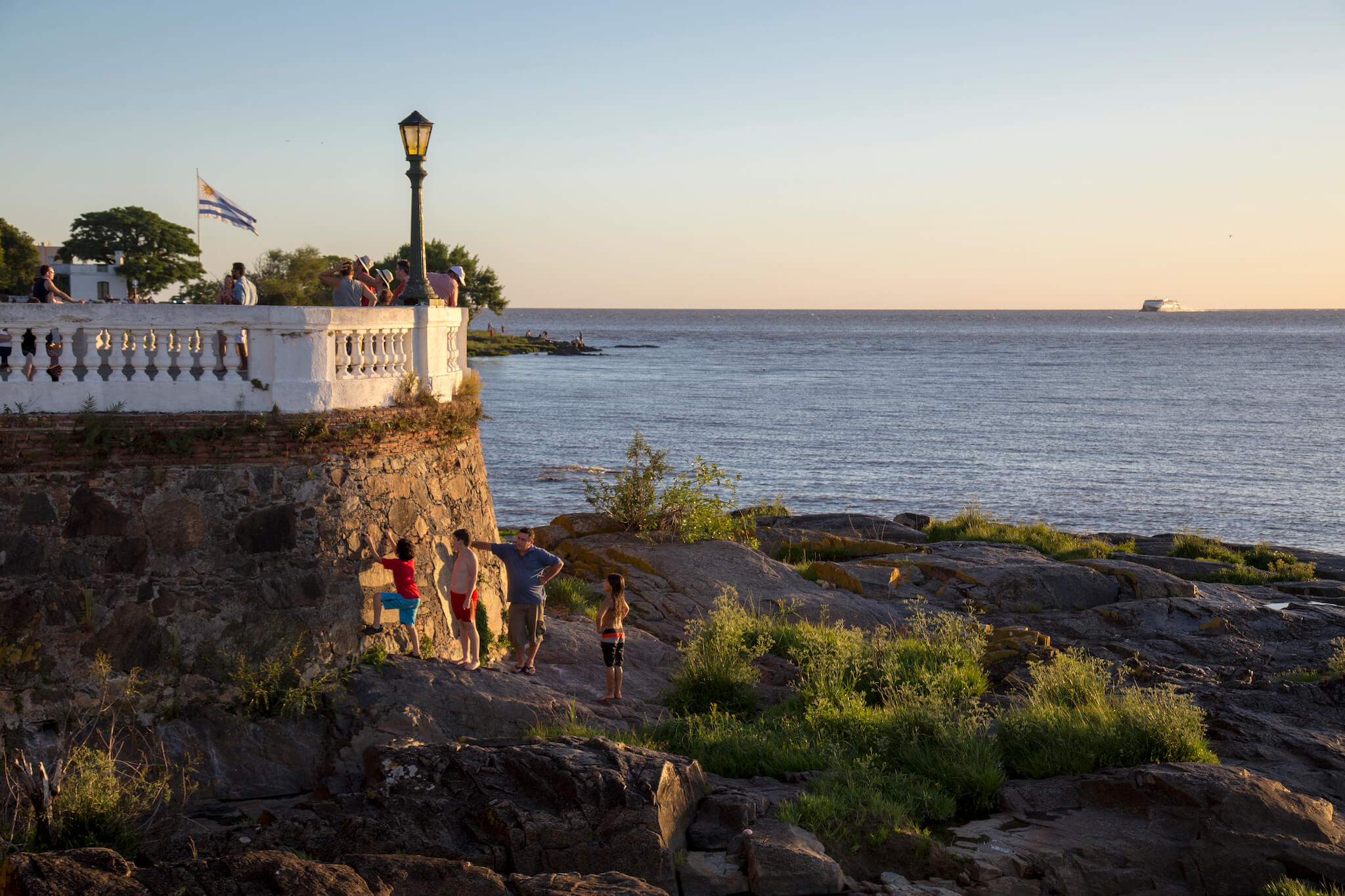
The historic town is built on the seafront, giving way to small beaches where locals and visitors alike enjoy the last rays of sunshine. In the distance, a ferry arriving from Buenos Aires.
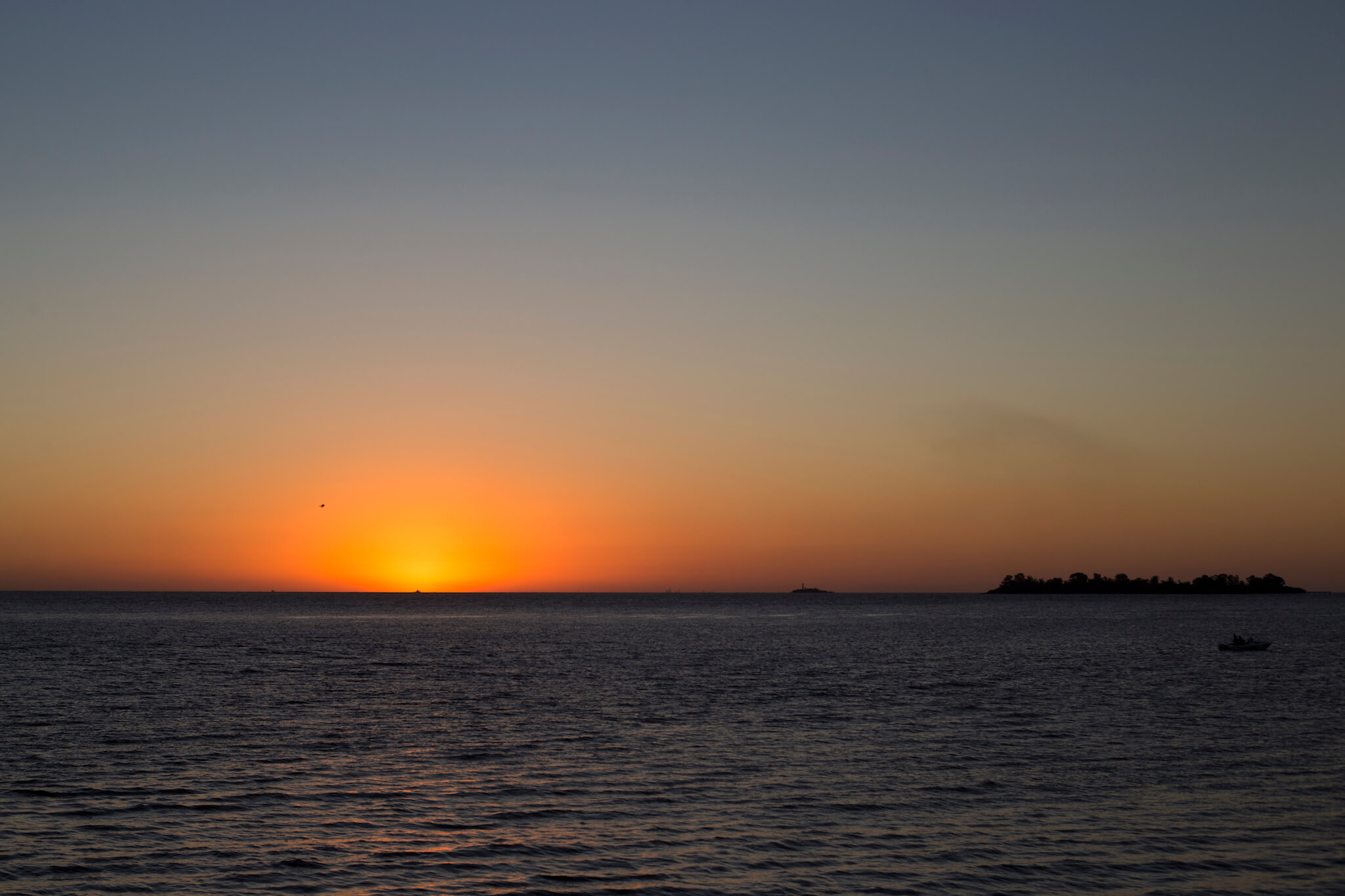
In the evening, a spectacular sunset. As the sun disappeared, swallowed up by the sea, the crowd applauded the scene. I later learned that it’s actually a Uruguayan custom to applaud the end of a sunset. A happy sight for my last moments in South America, after 5 weeks on the continent.
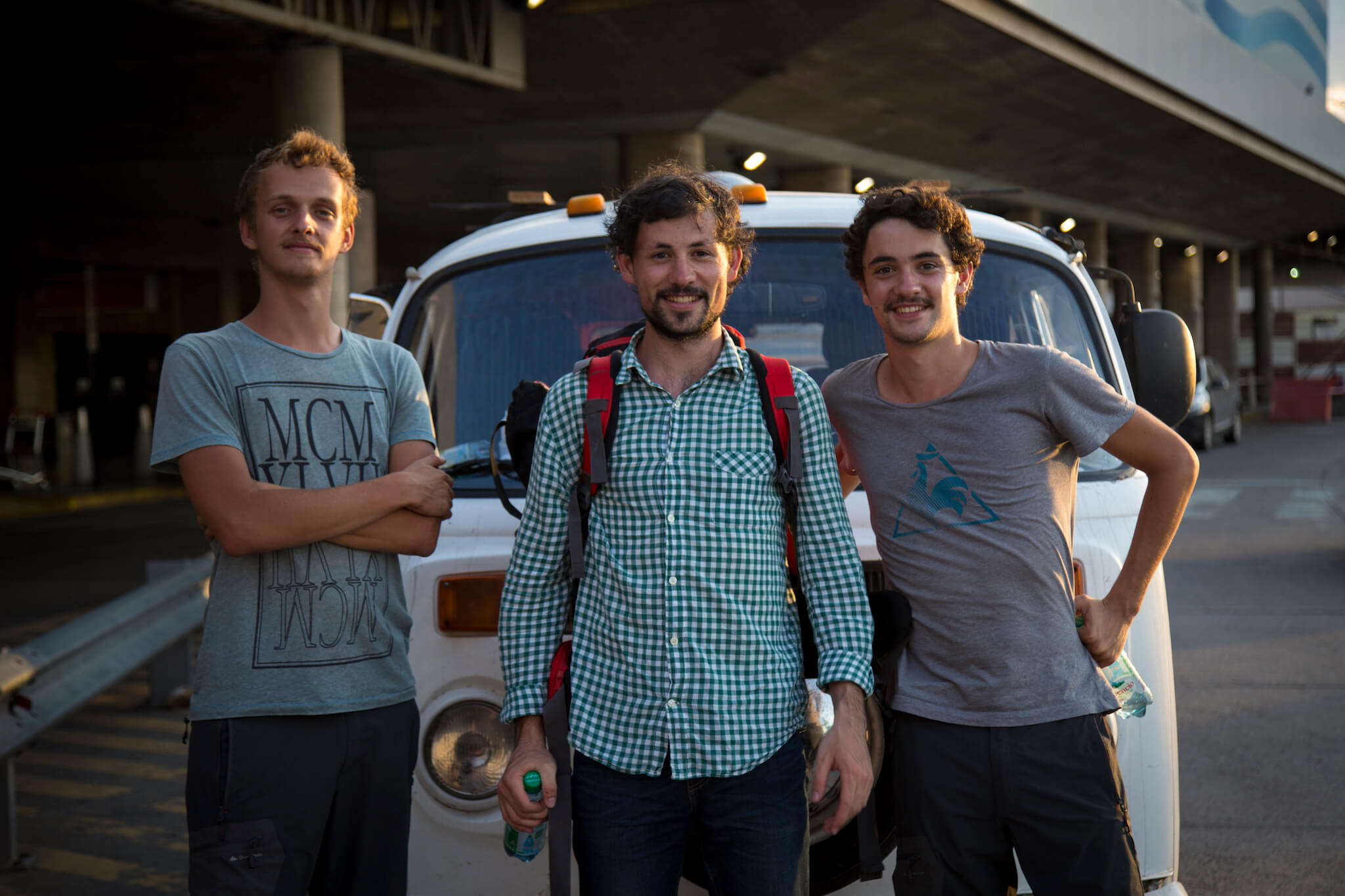
Drop-off at Buenos Aires international airport. I end my journey as I began it, hitchhiking. Of course, I knew the driver… My little brother Adrien and his friend Grégoire are currently on a one-year round-the-world trip, using a variety of means of transport. First they hitchhiked to Moscow, then took the Trans-Siberian Railway to Mongolia, where they crossed the steppes on motorcycles. They then traveled to China and India by bus and train. Today, they’re in South America at the wheel of a Volkswagen Kombi. Their adventure is punctuated by meetings with social structures and NGOs to produce turnkey communication videos (www.facebook.com/catourneautourdumonde).